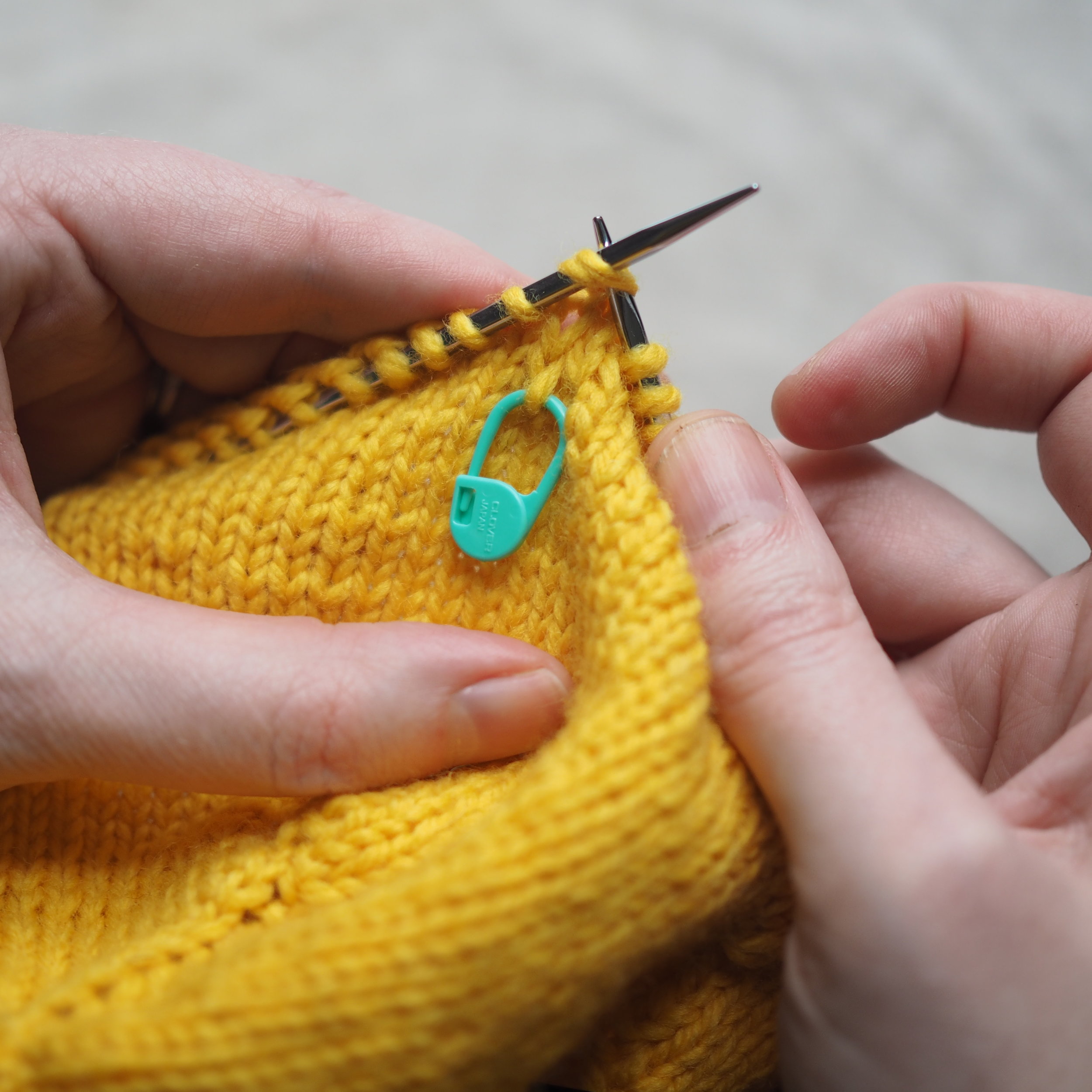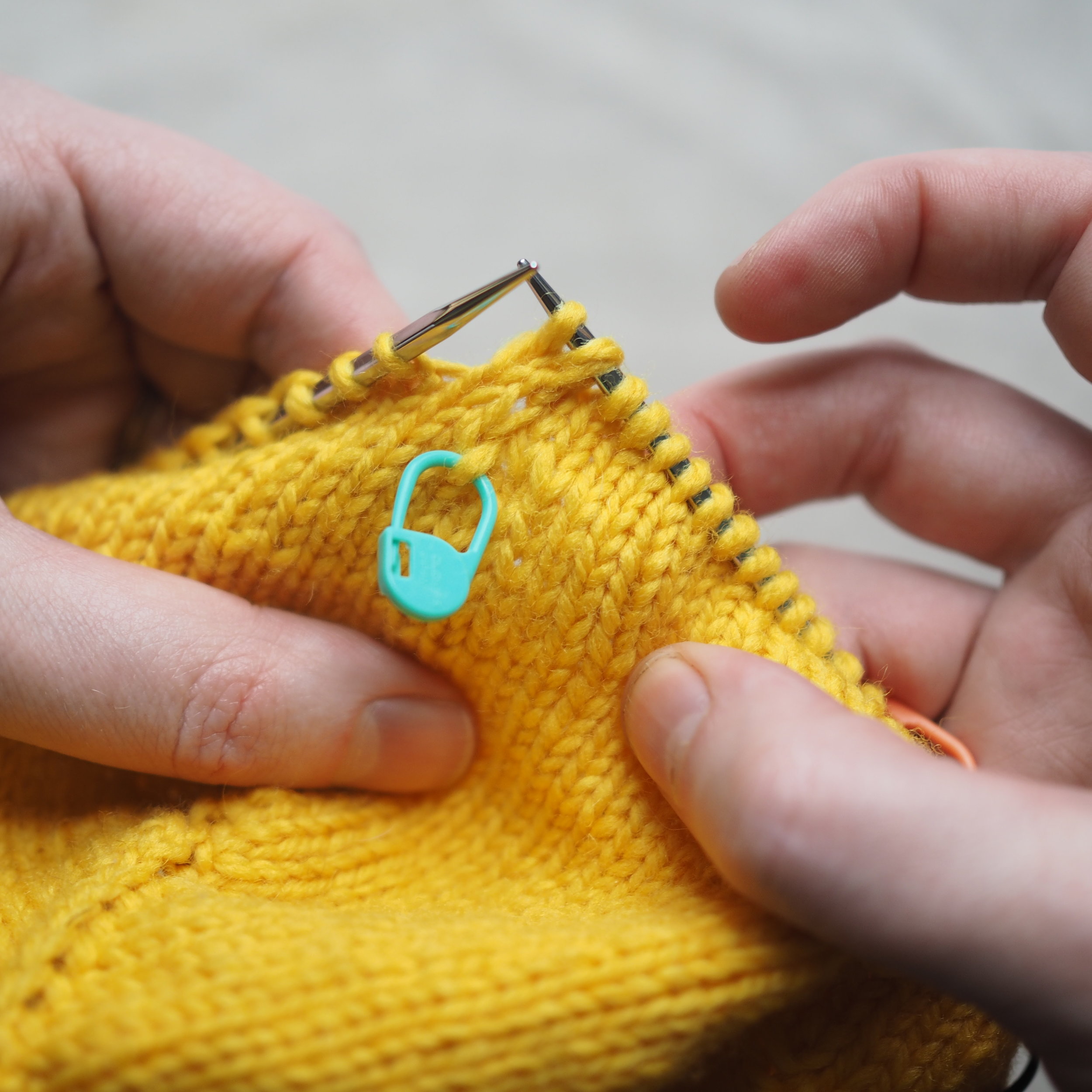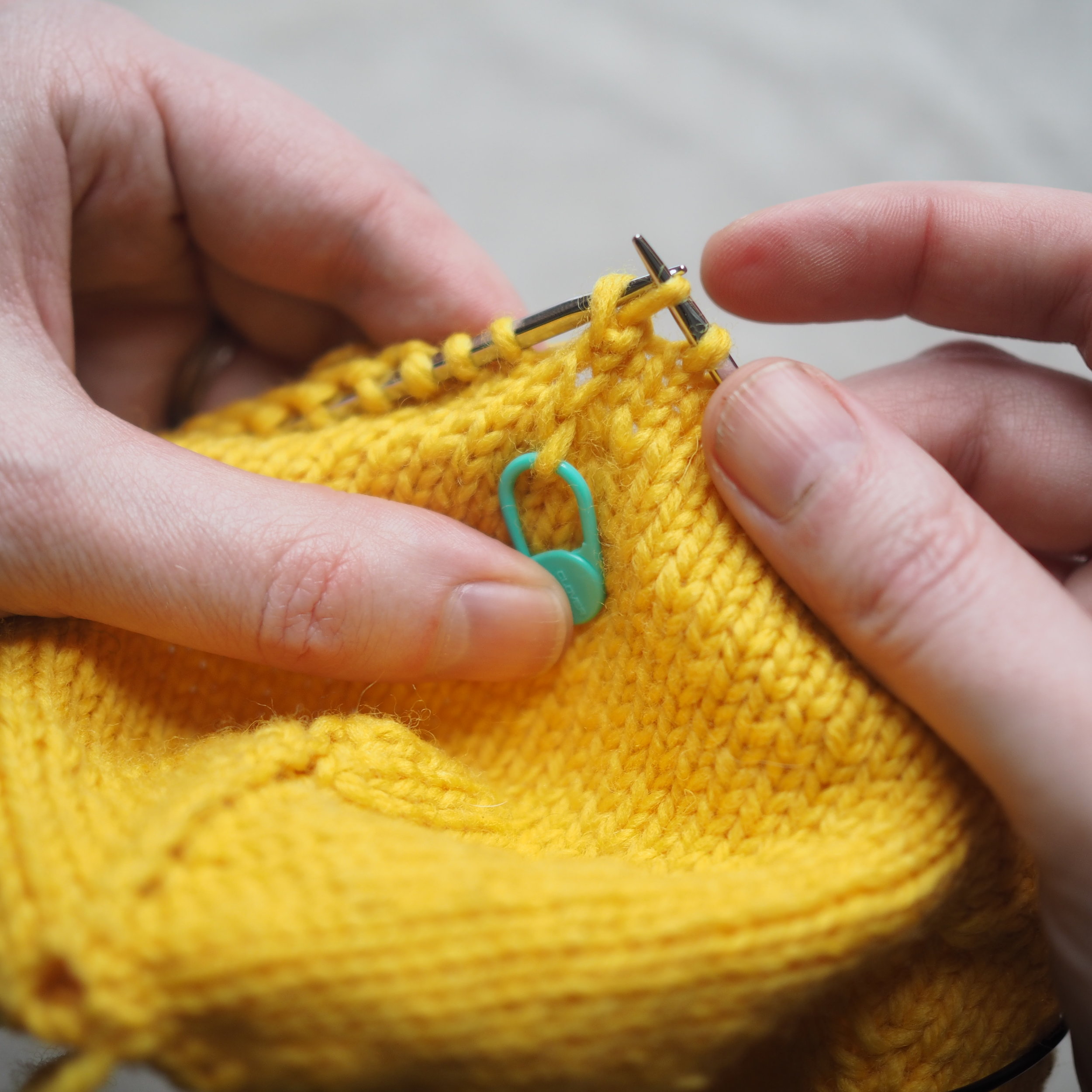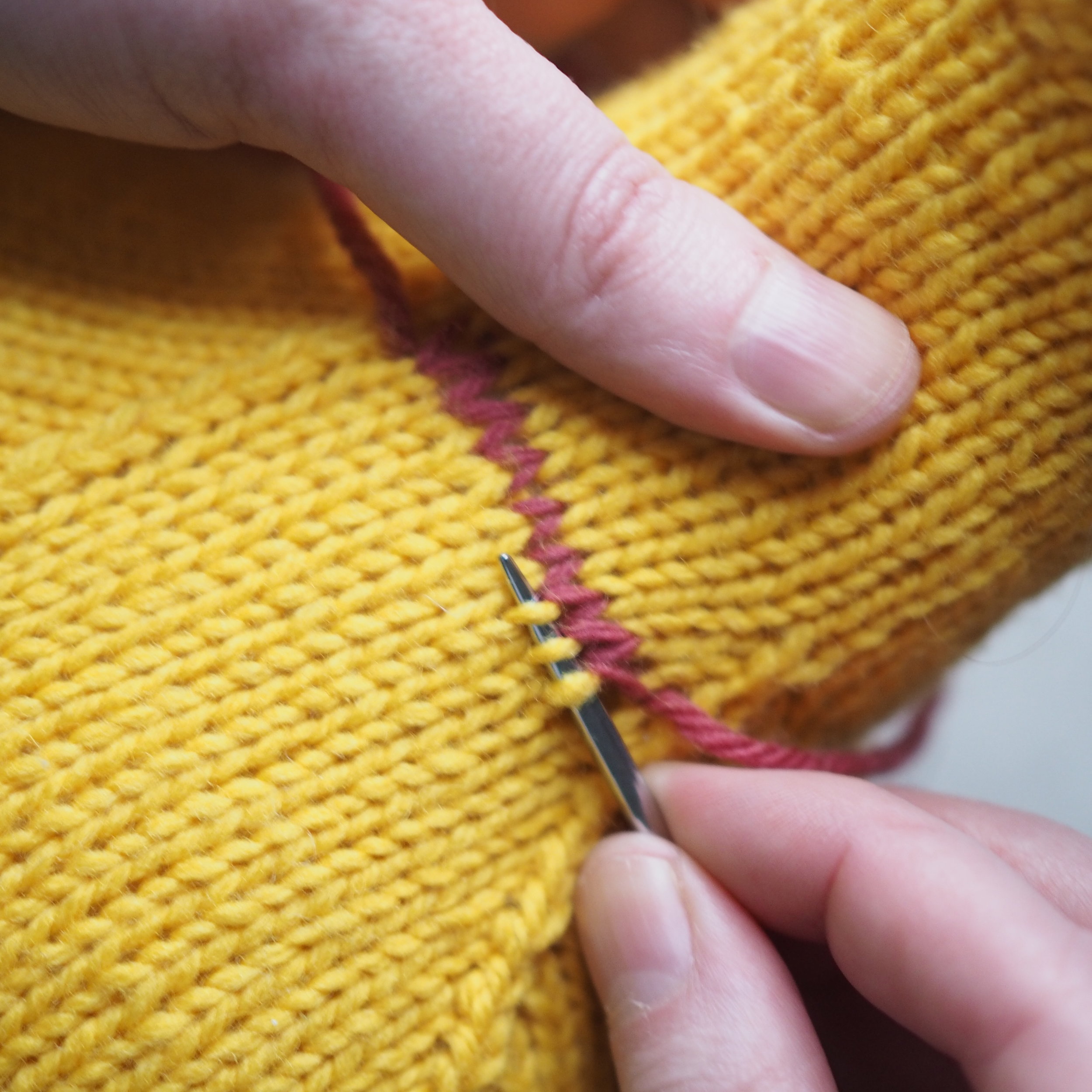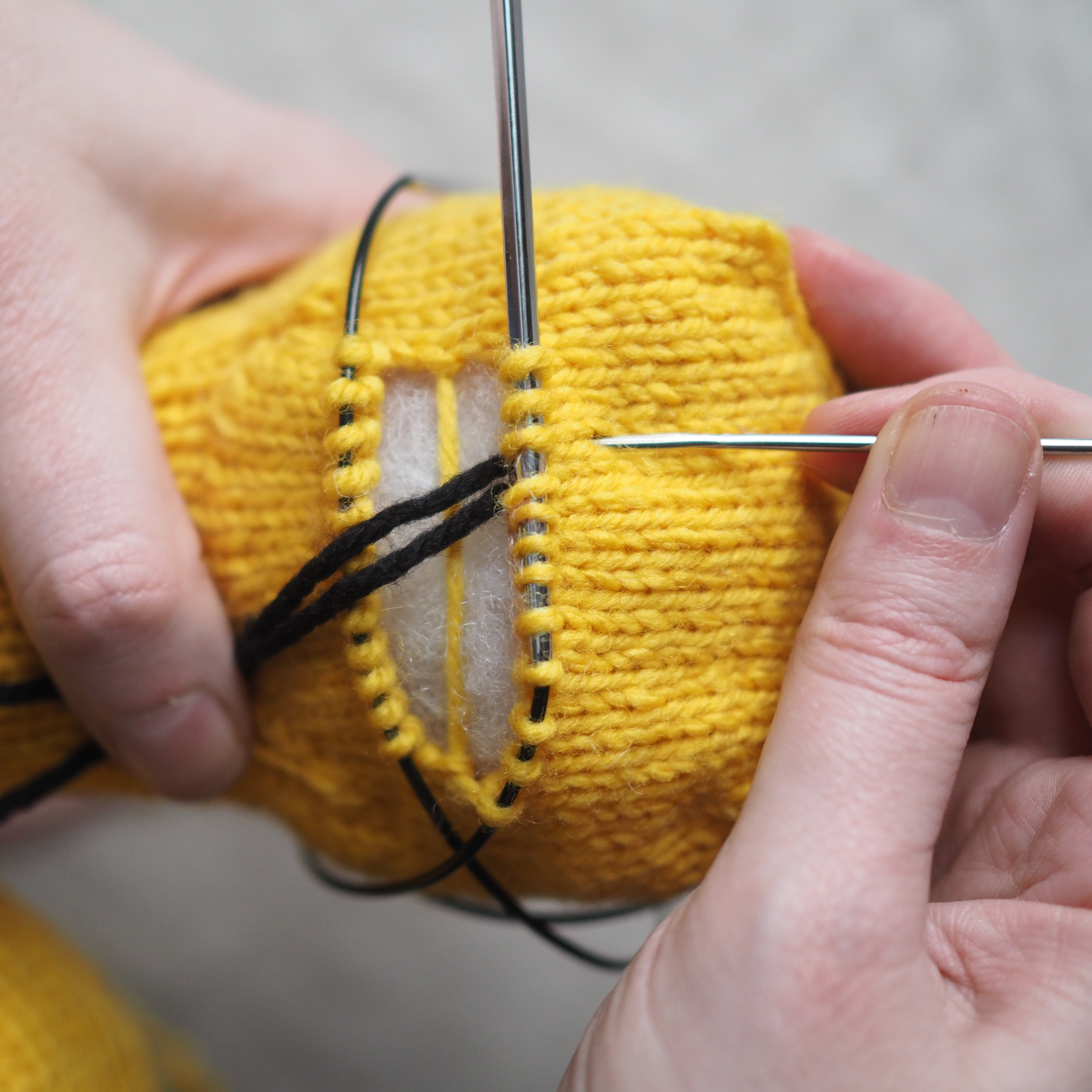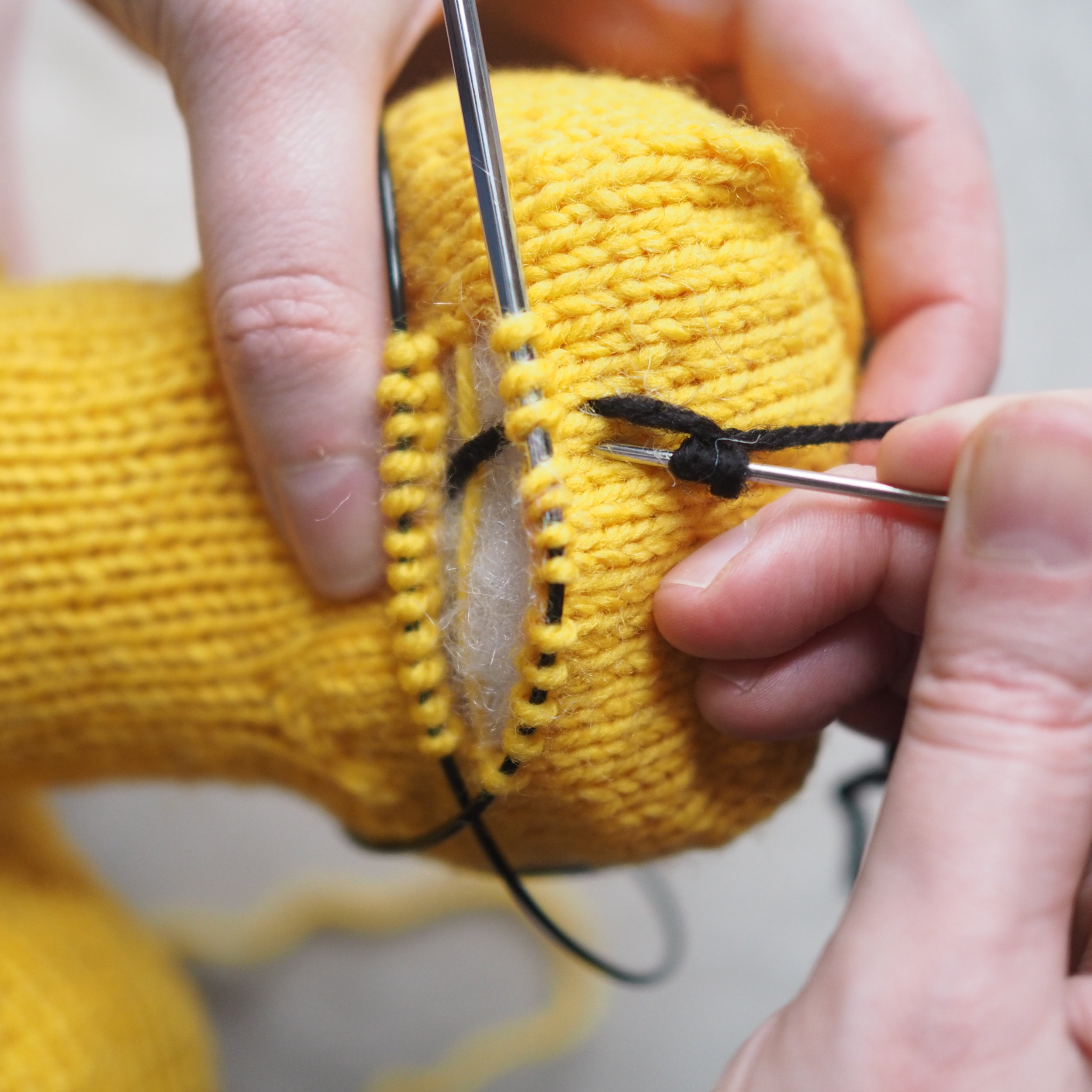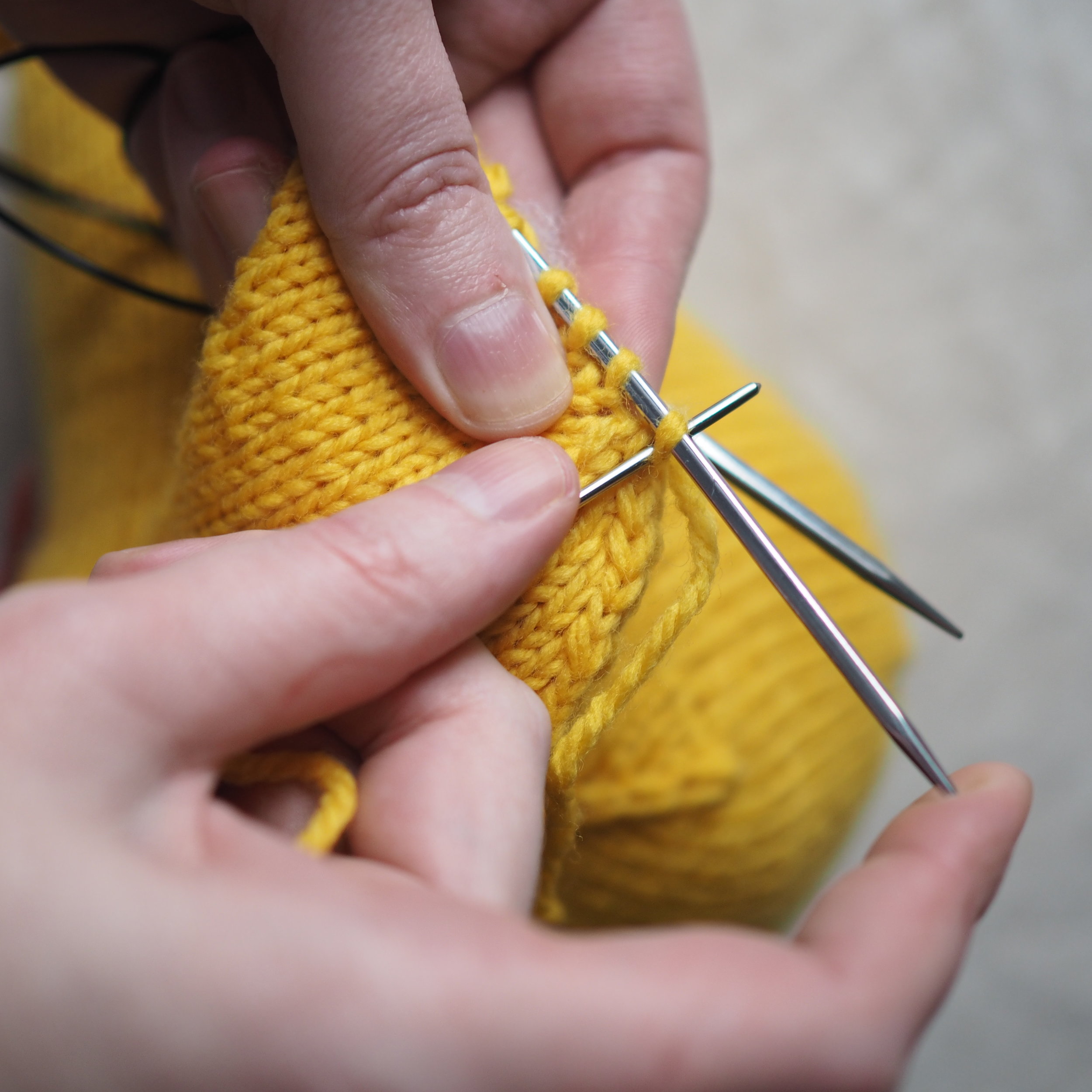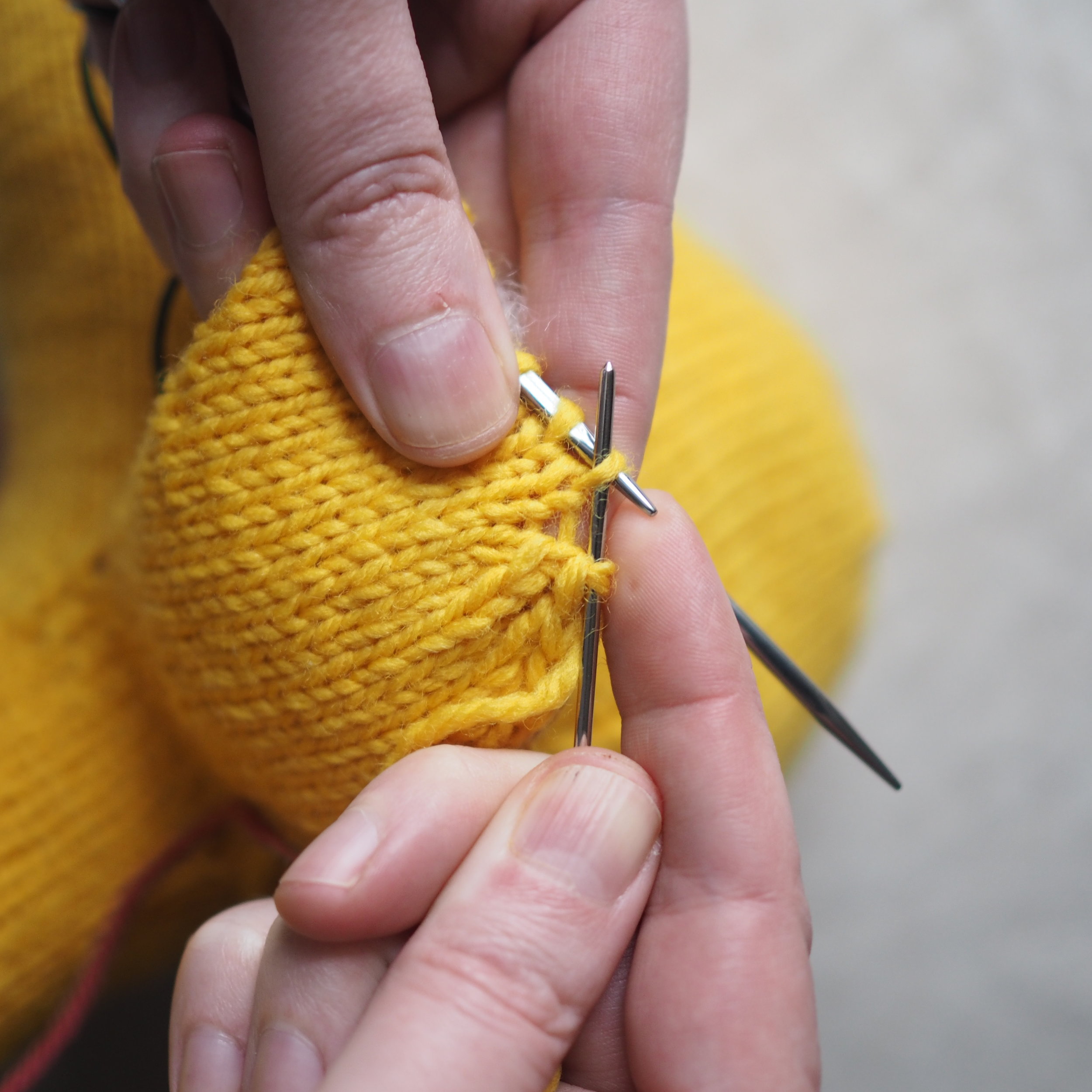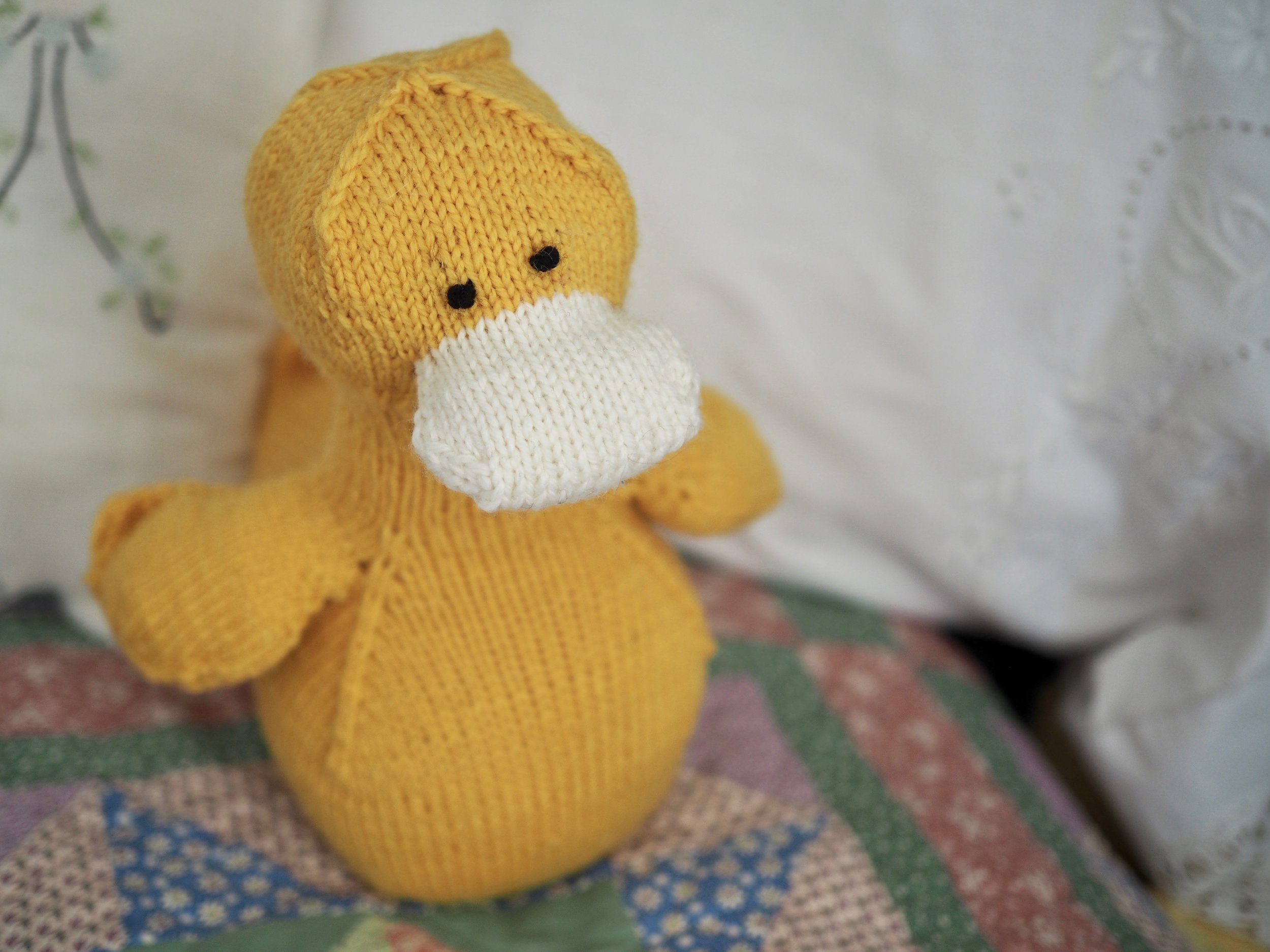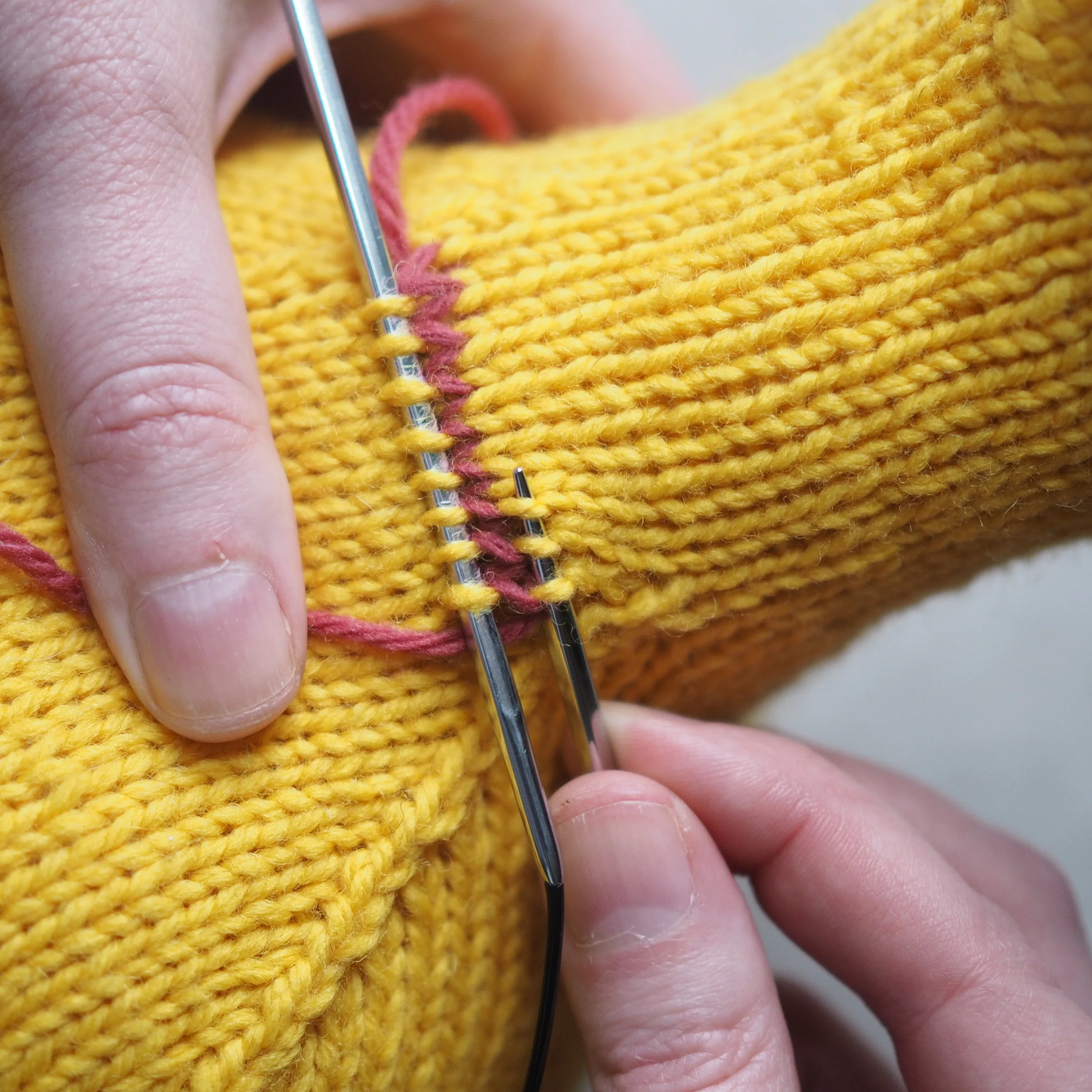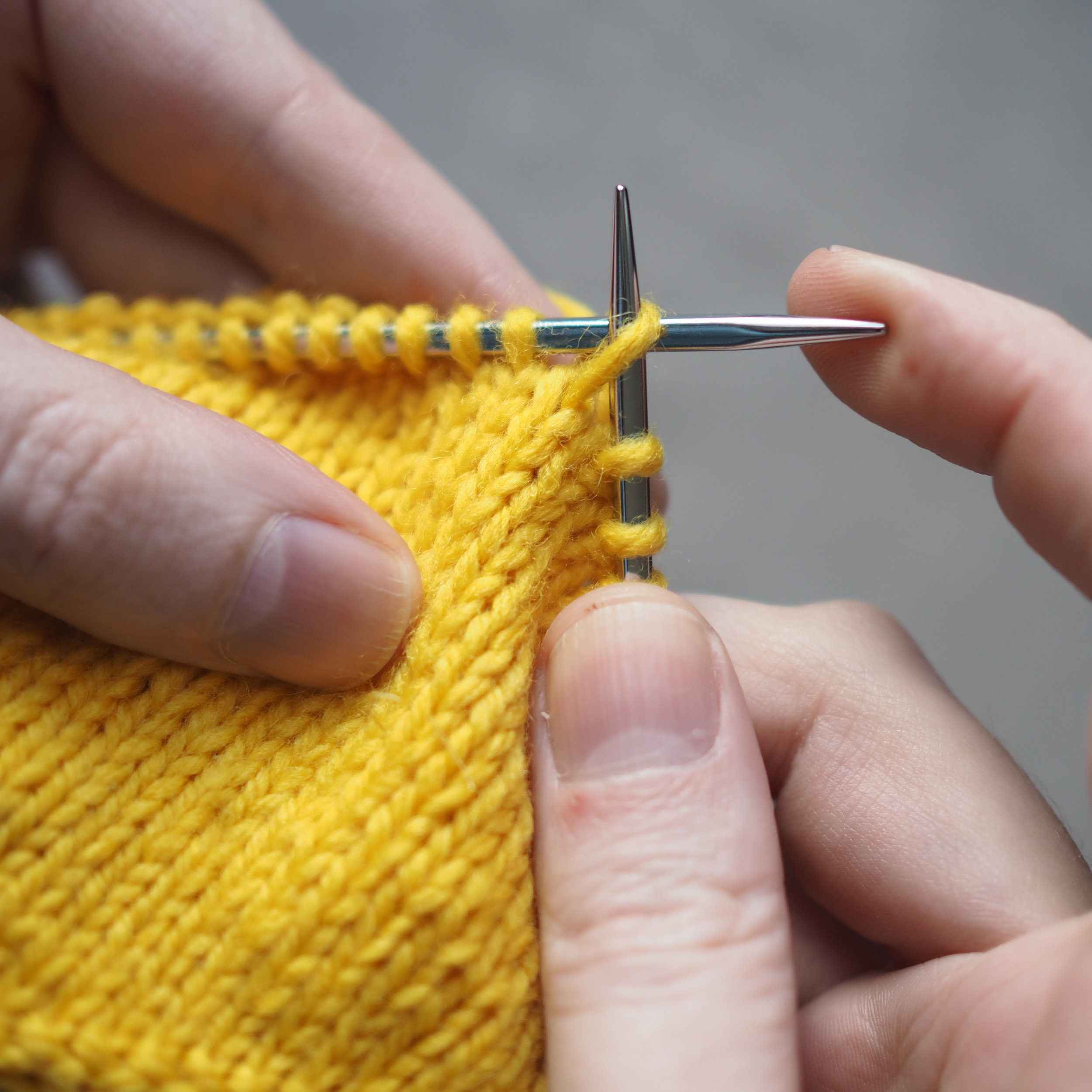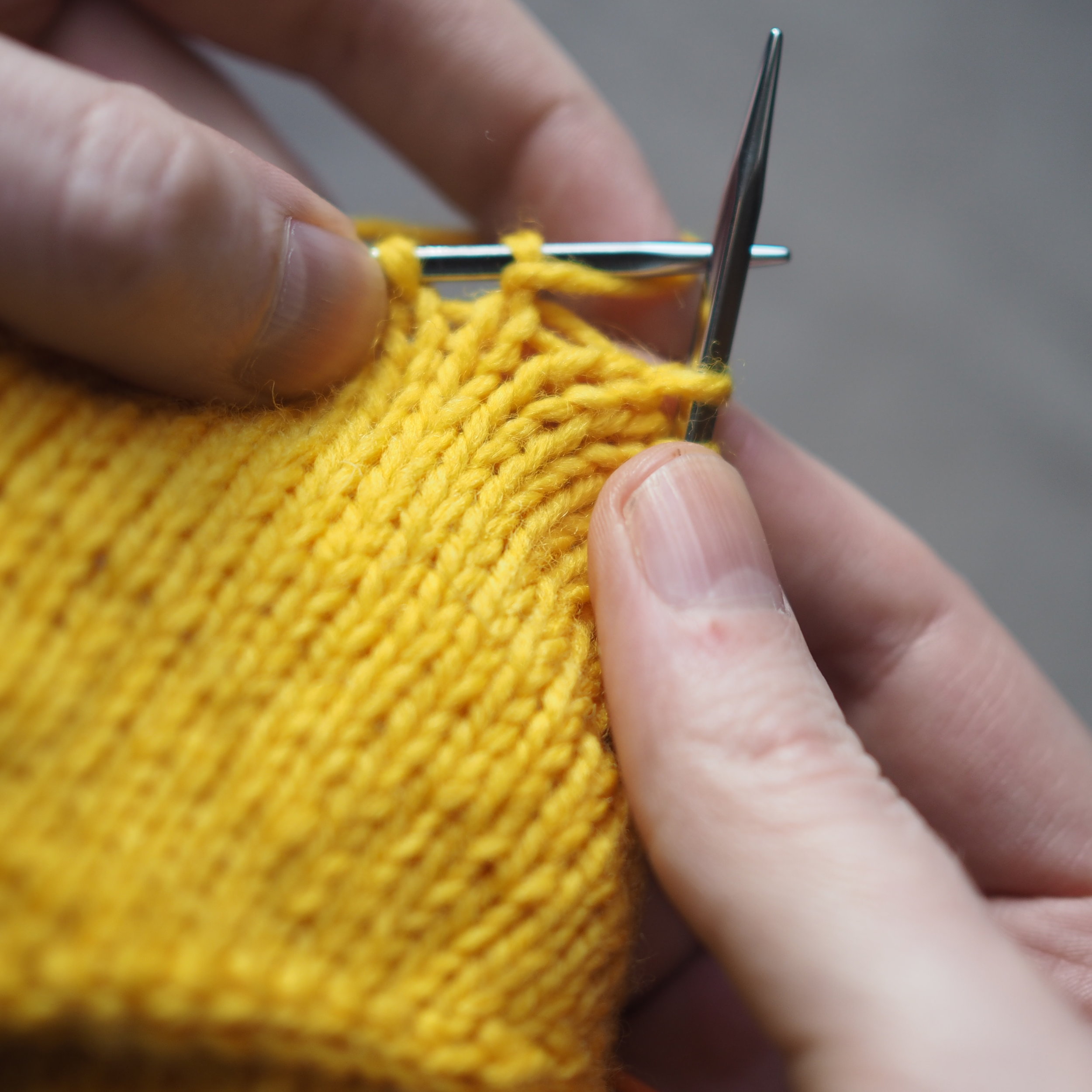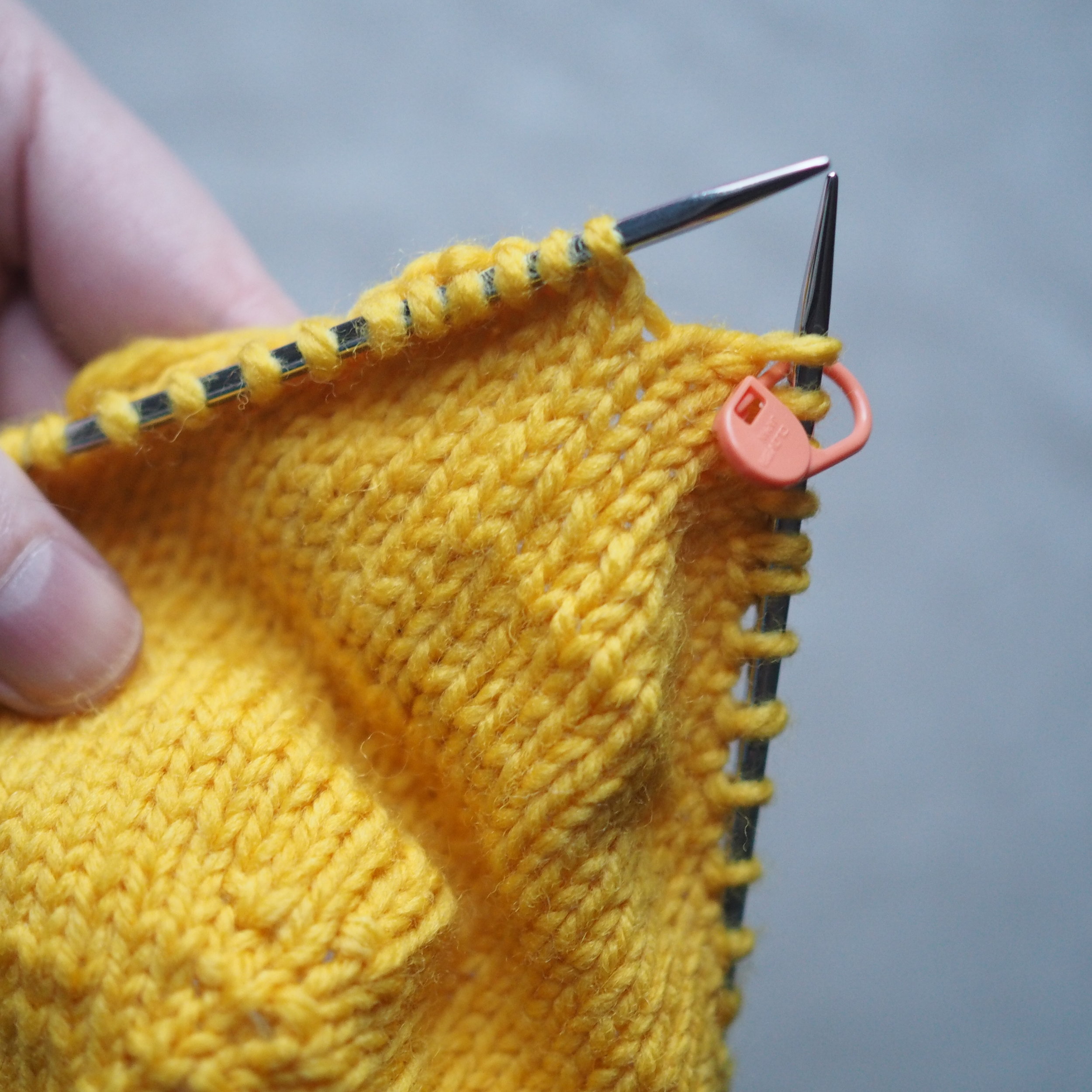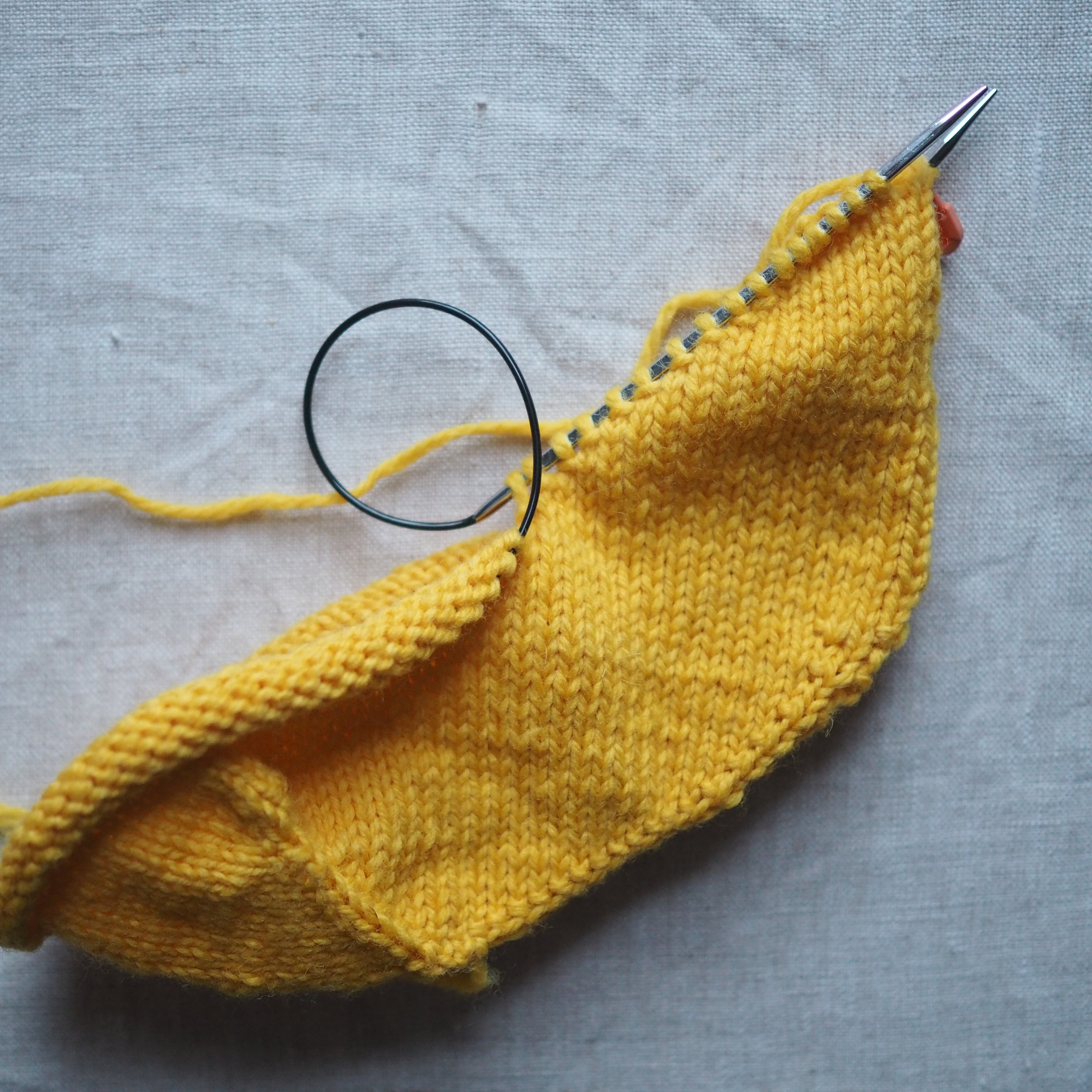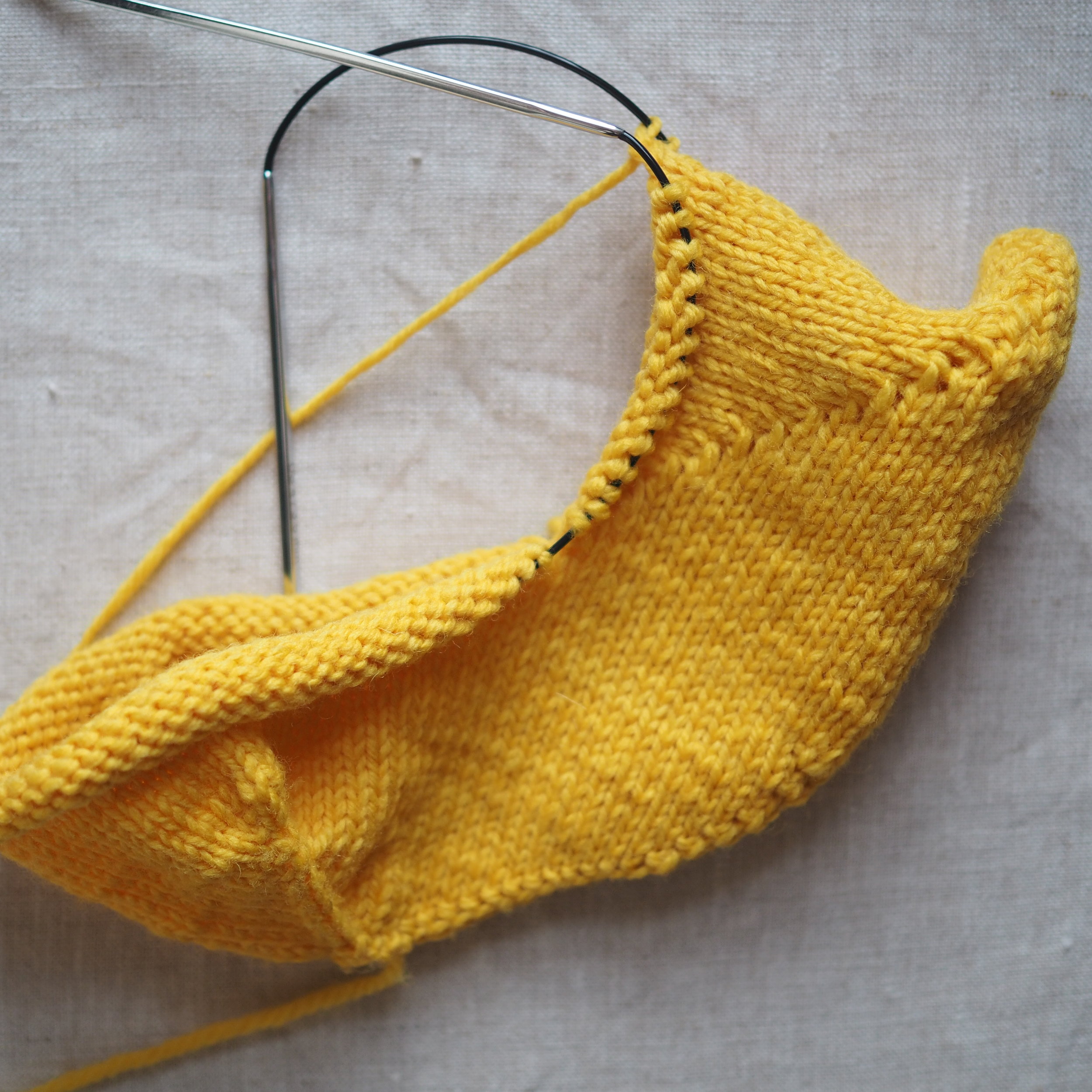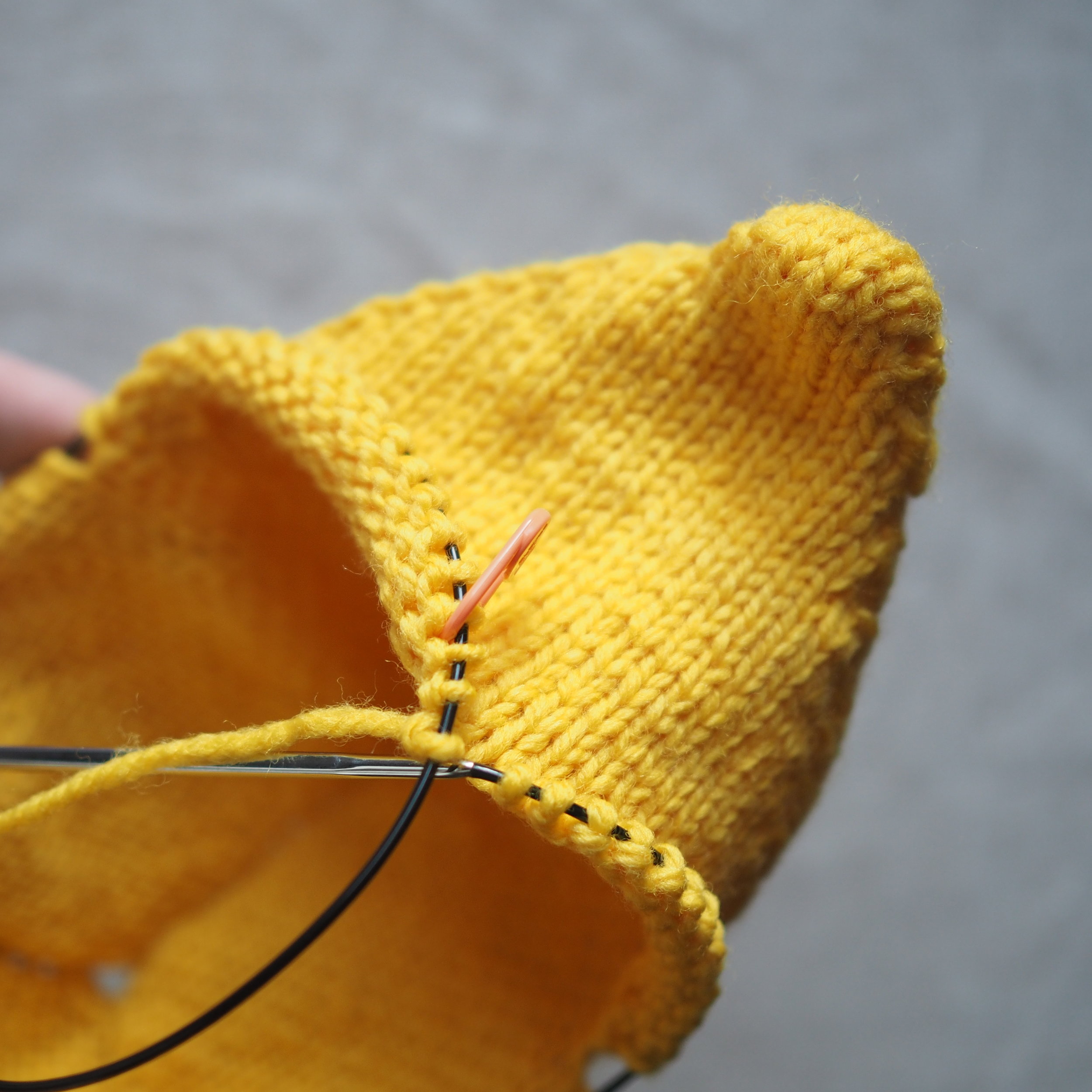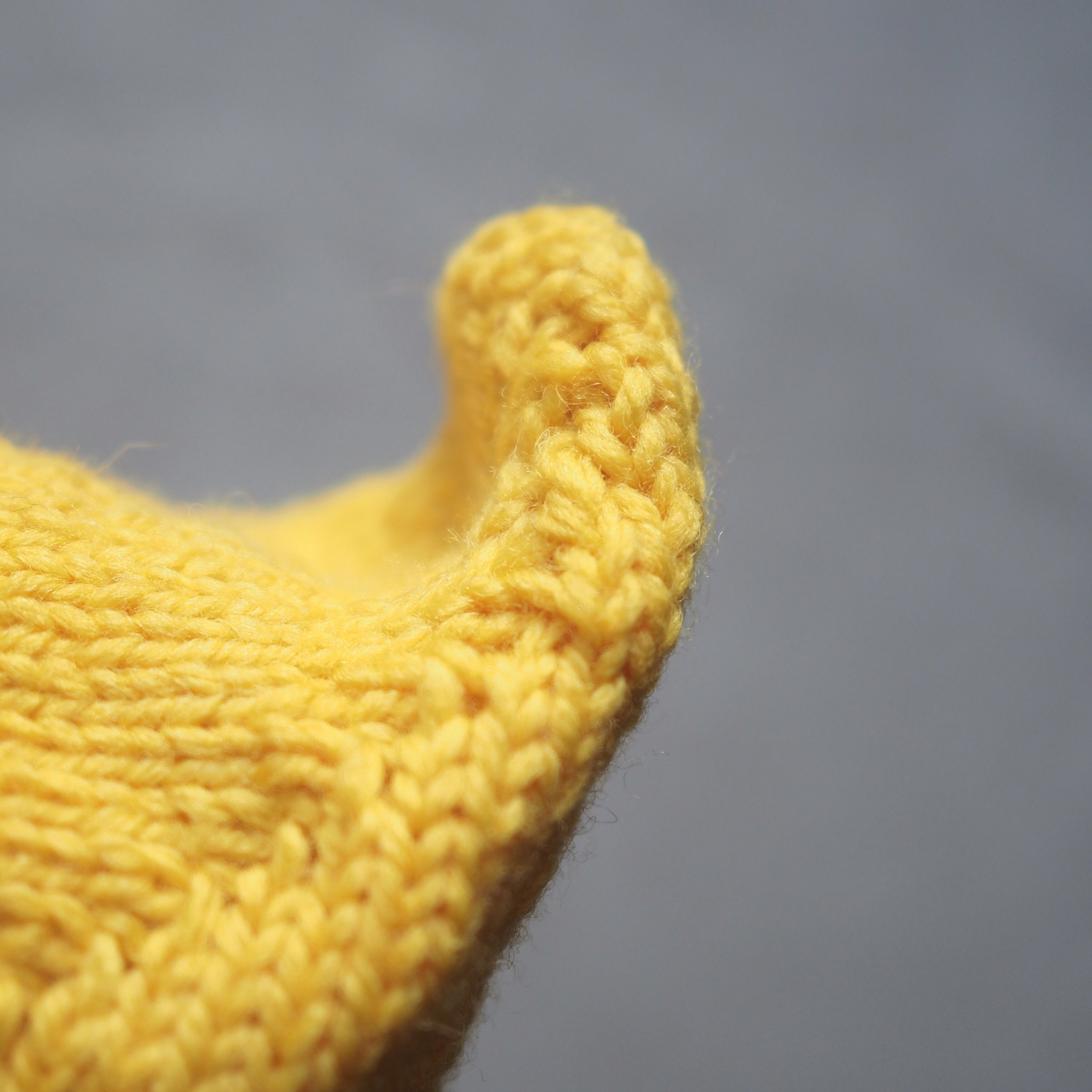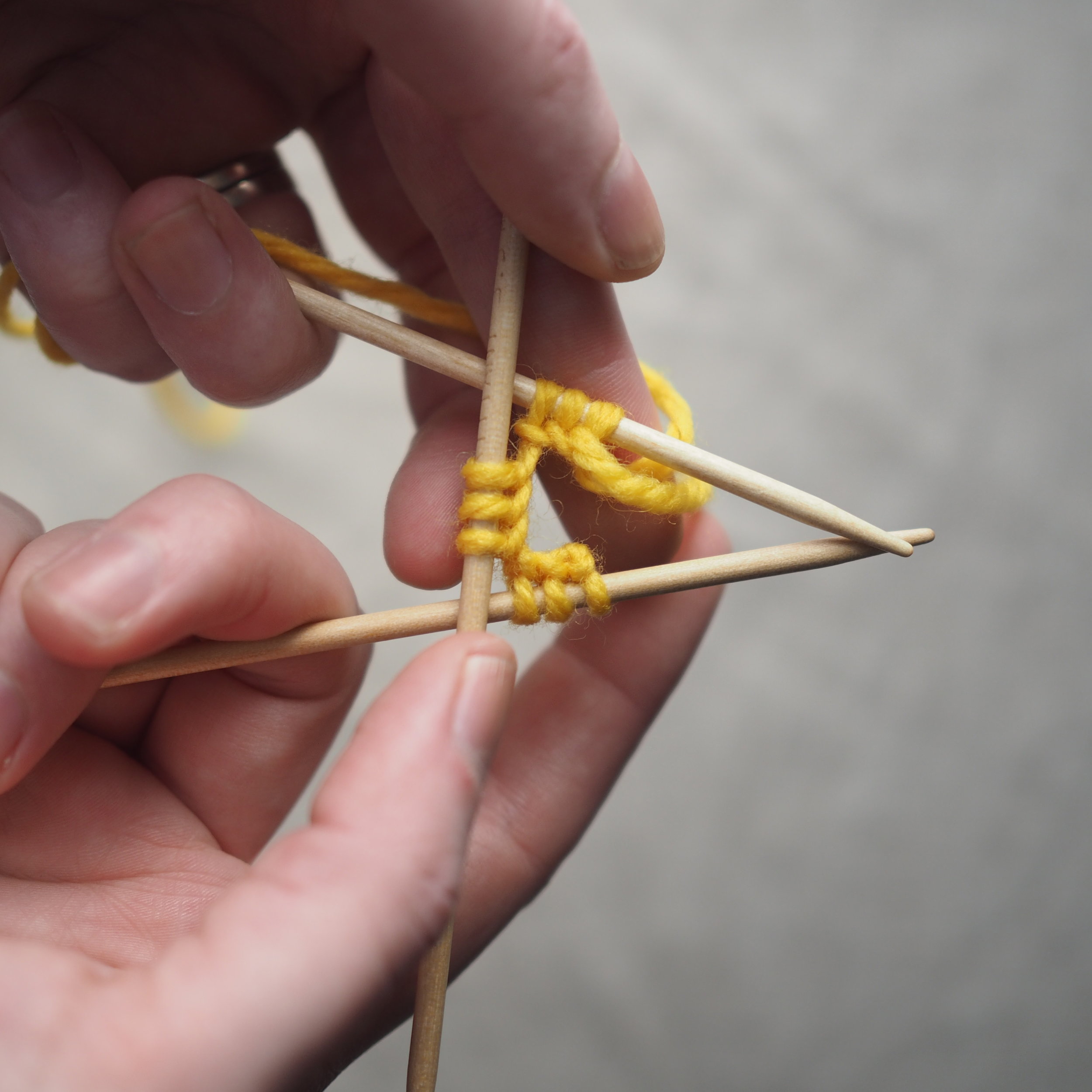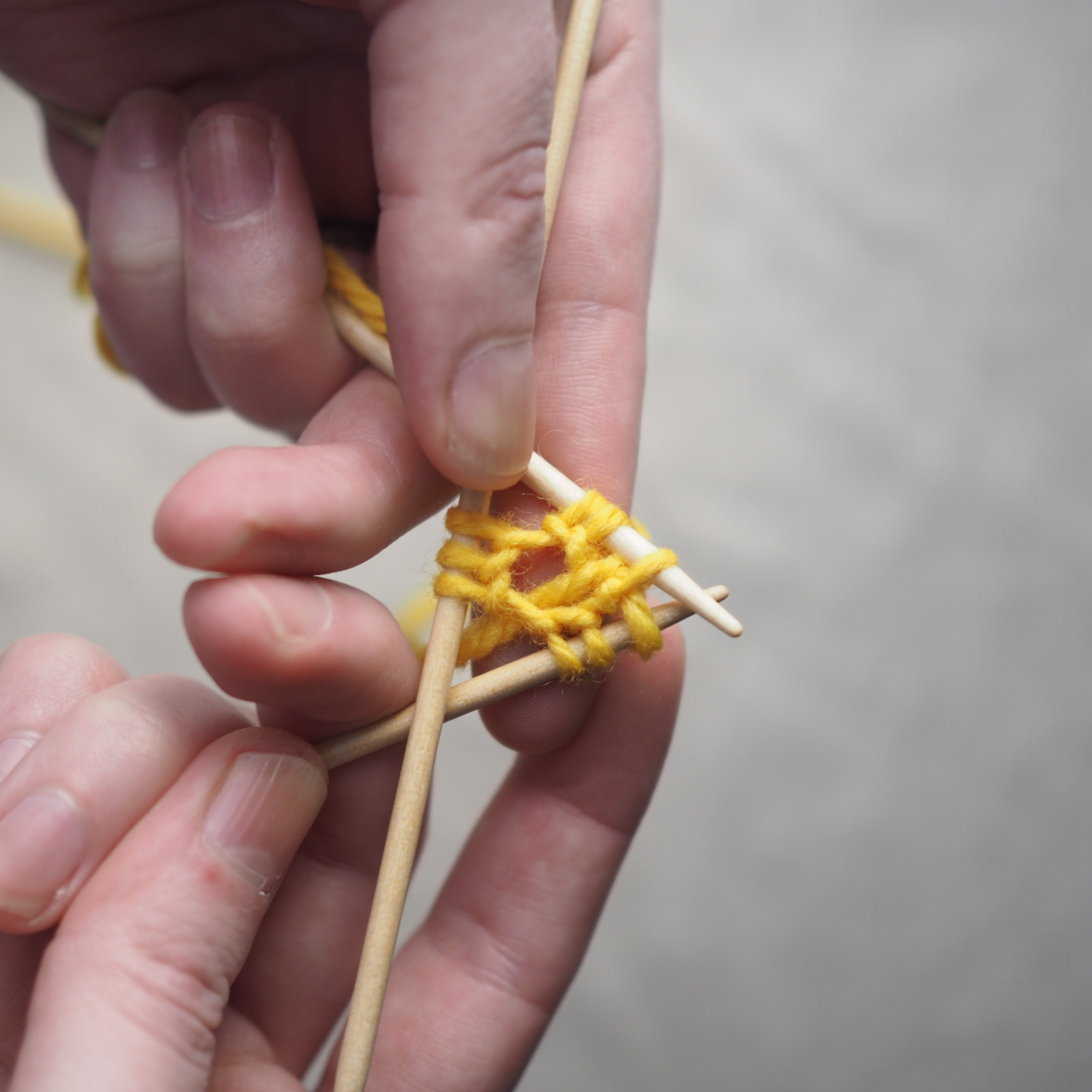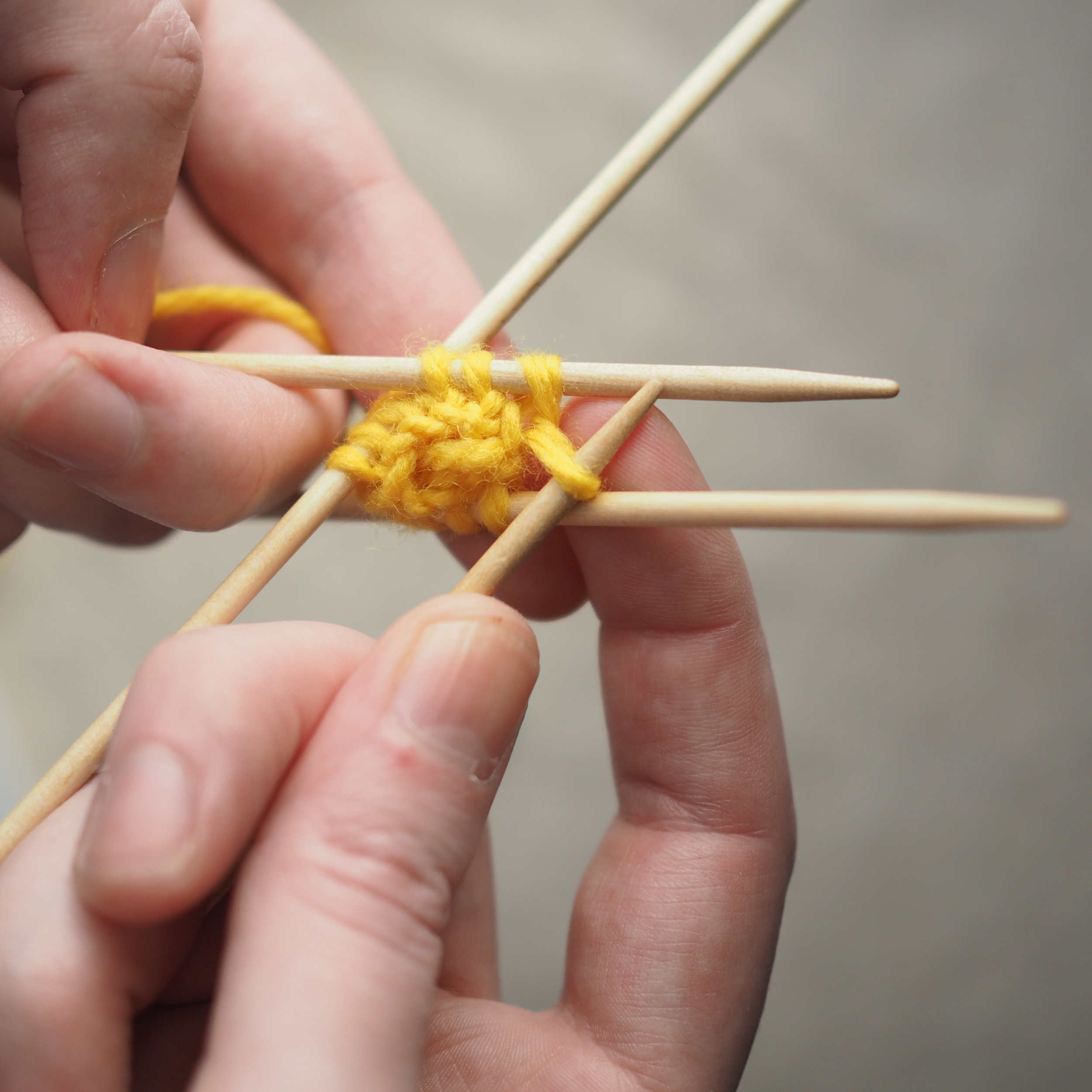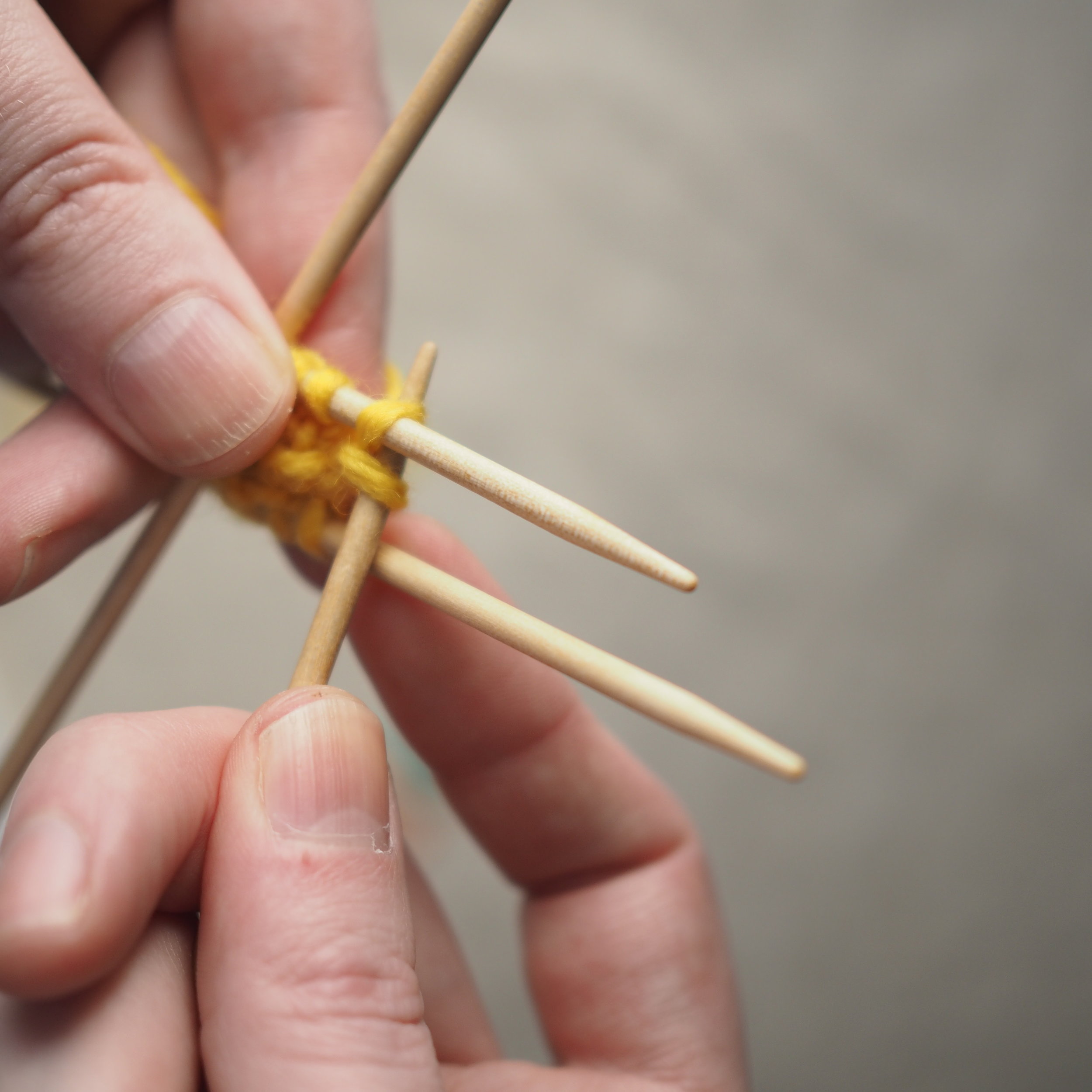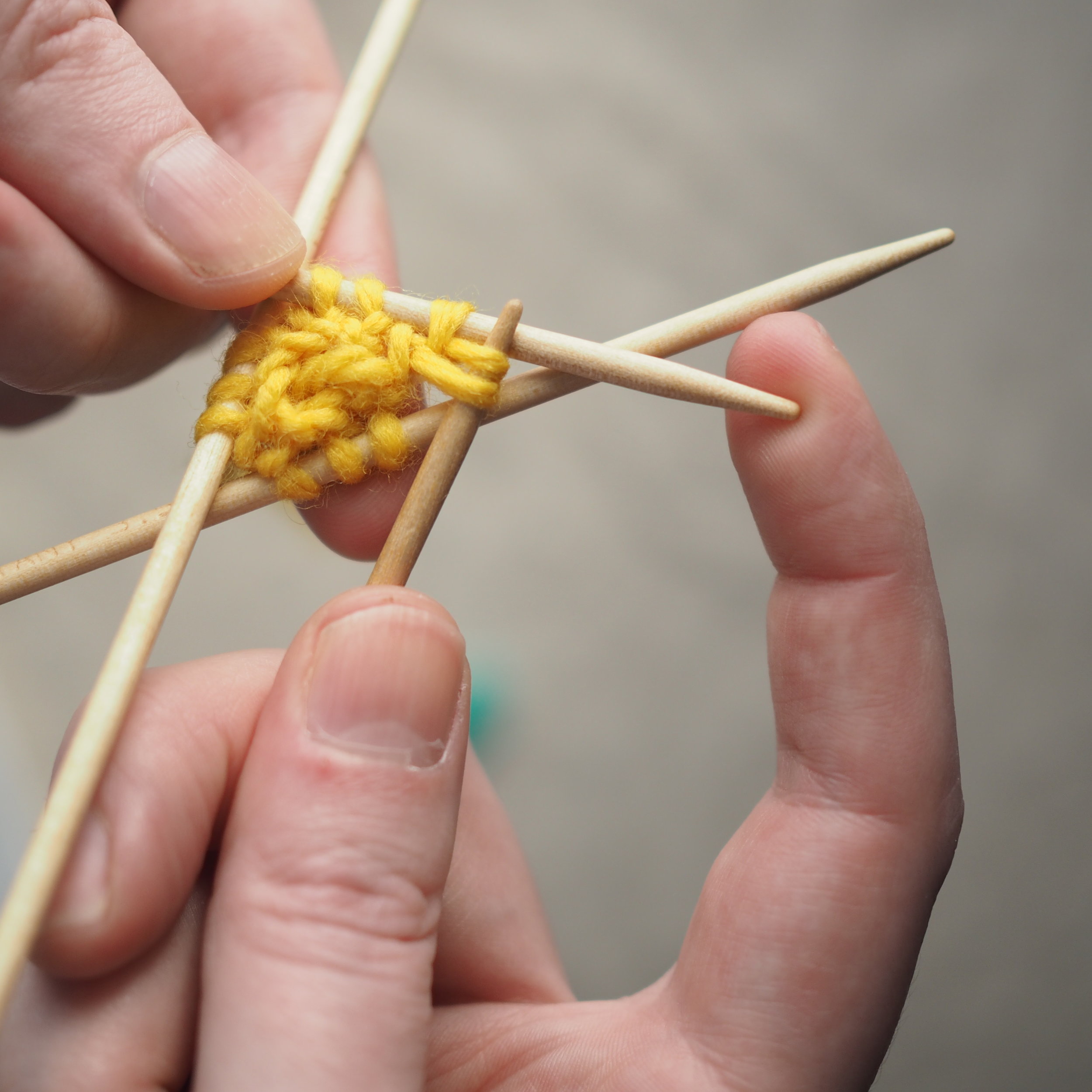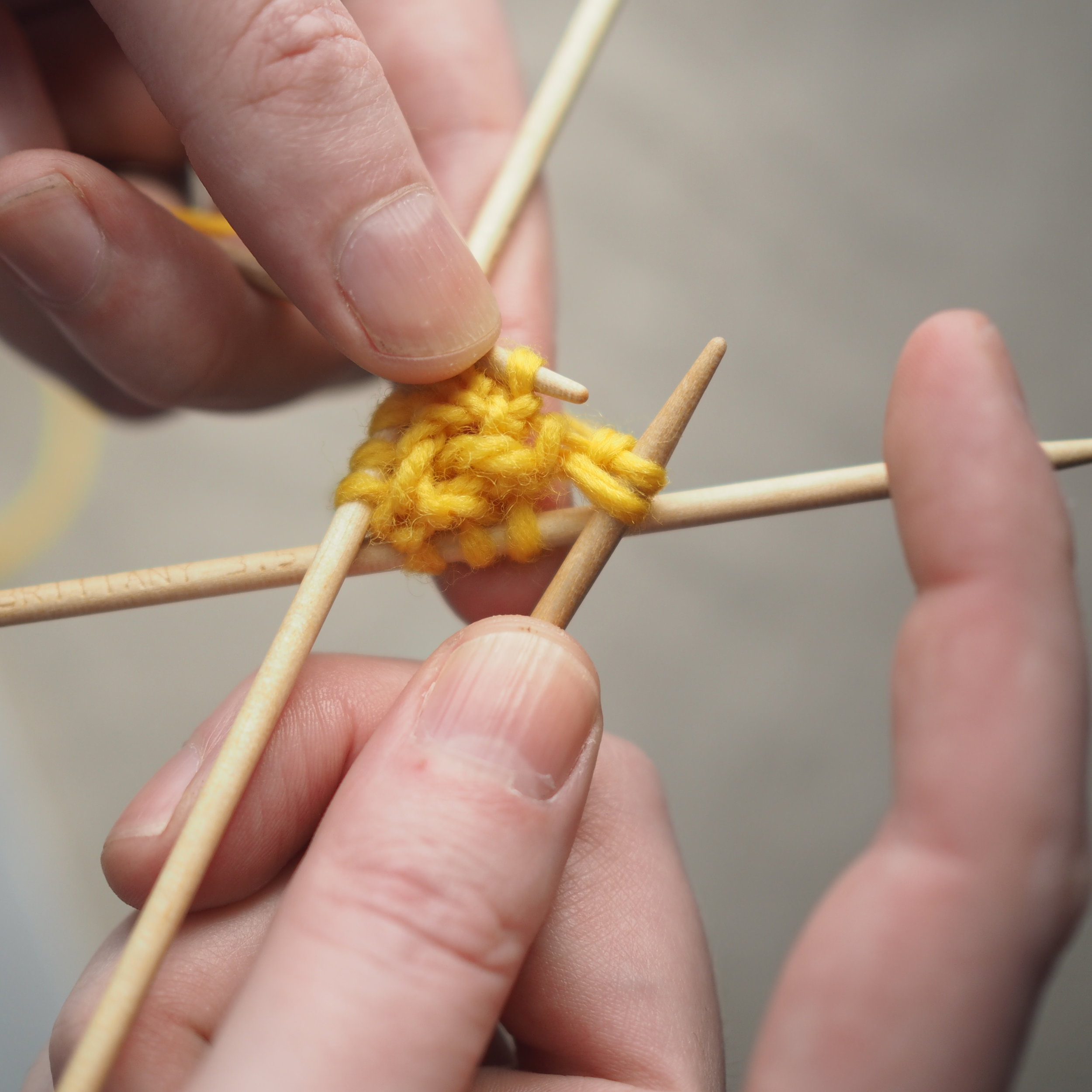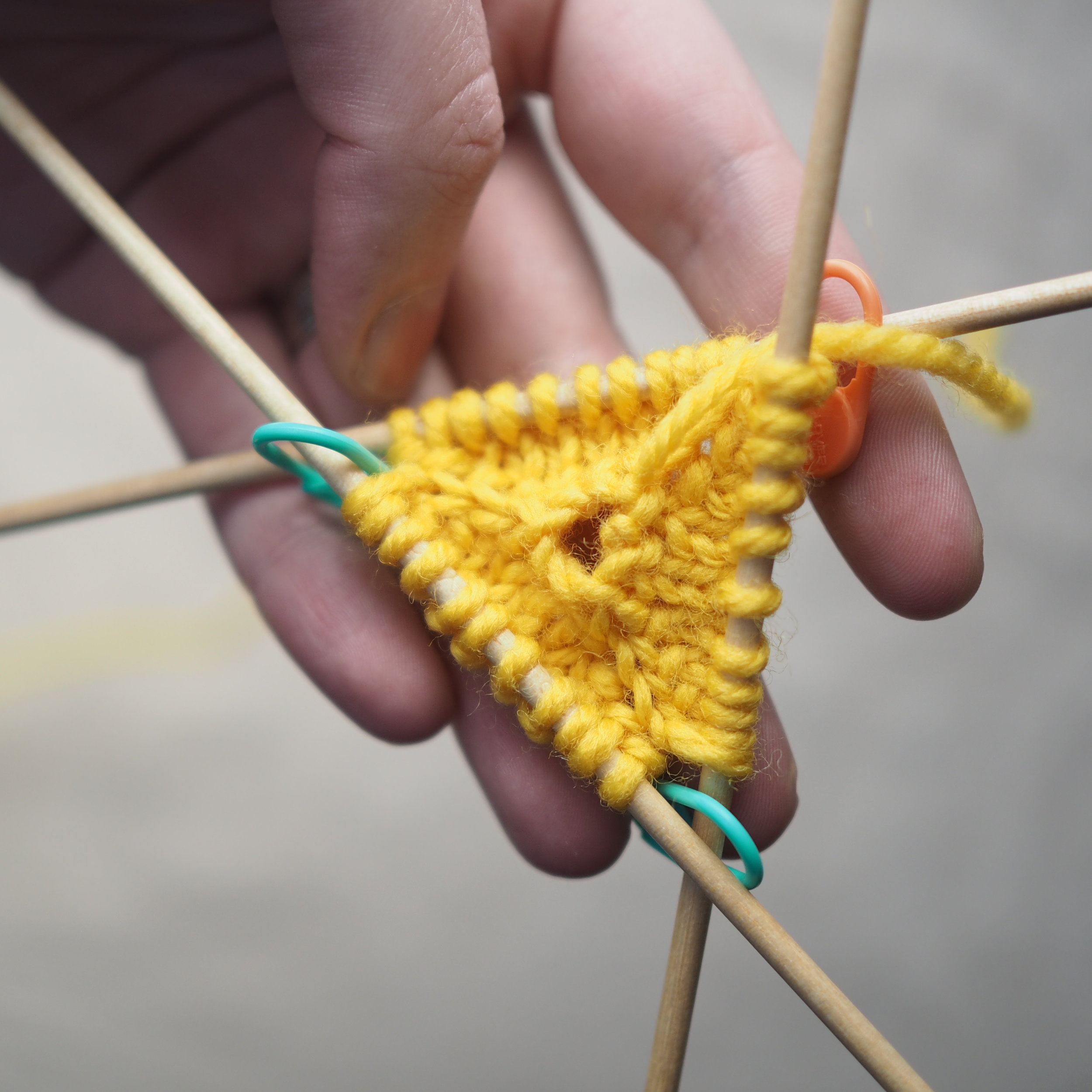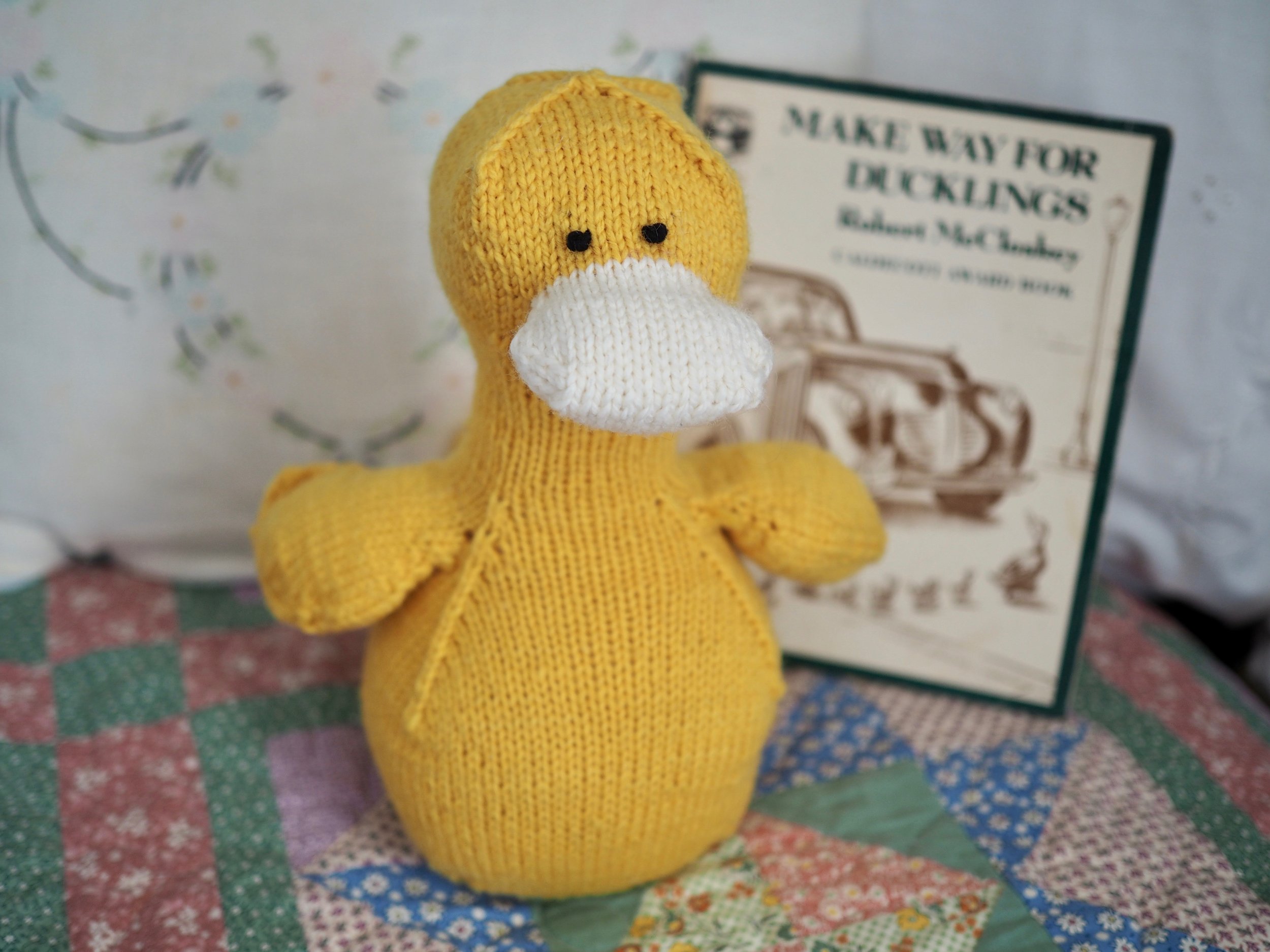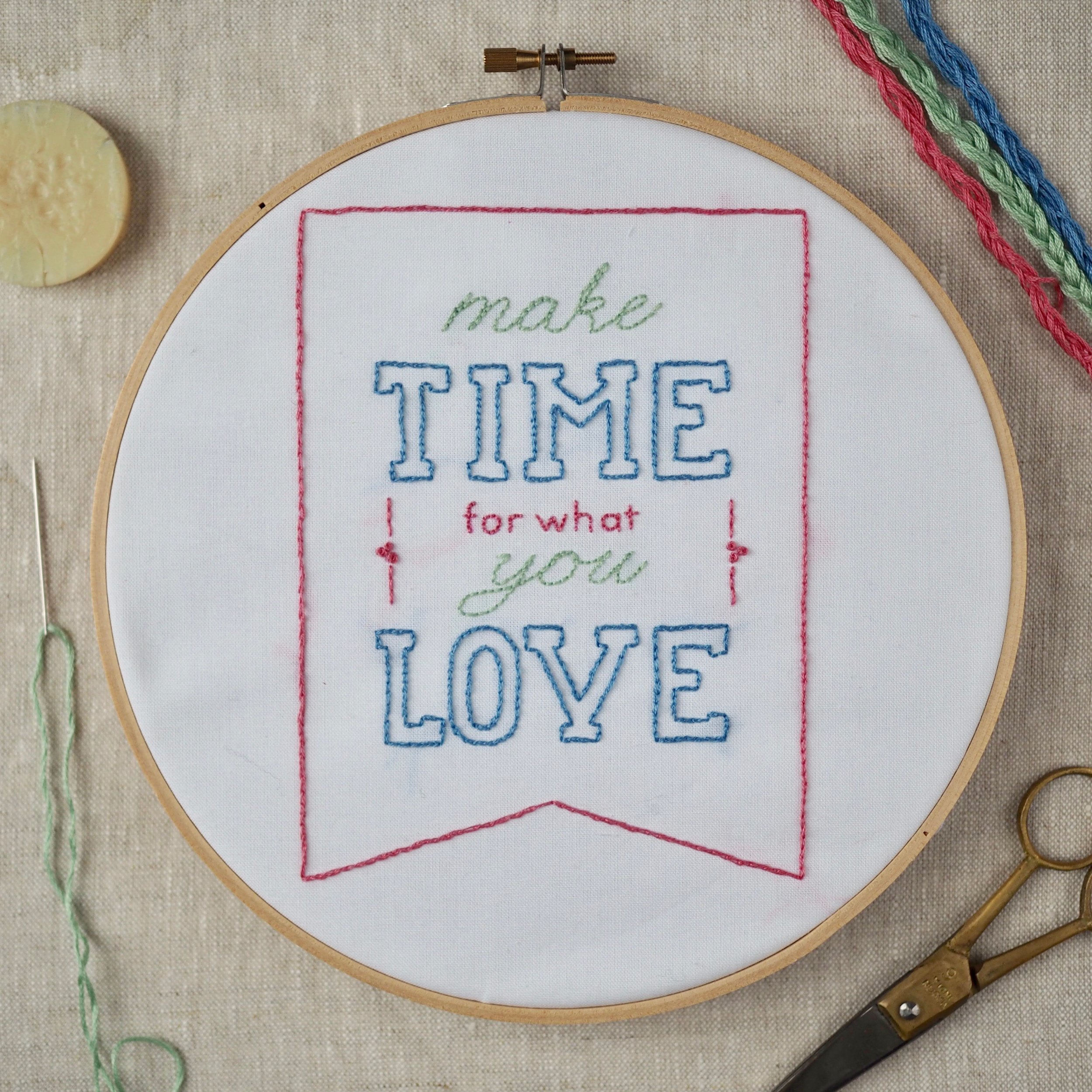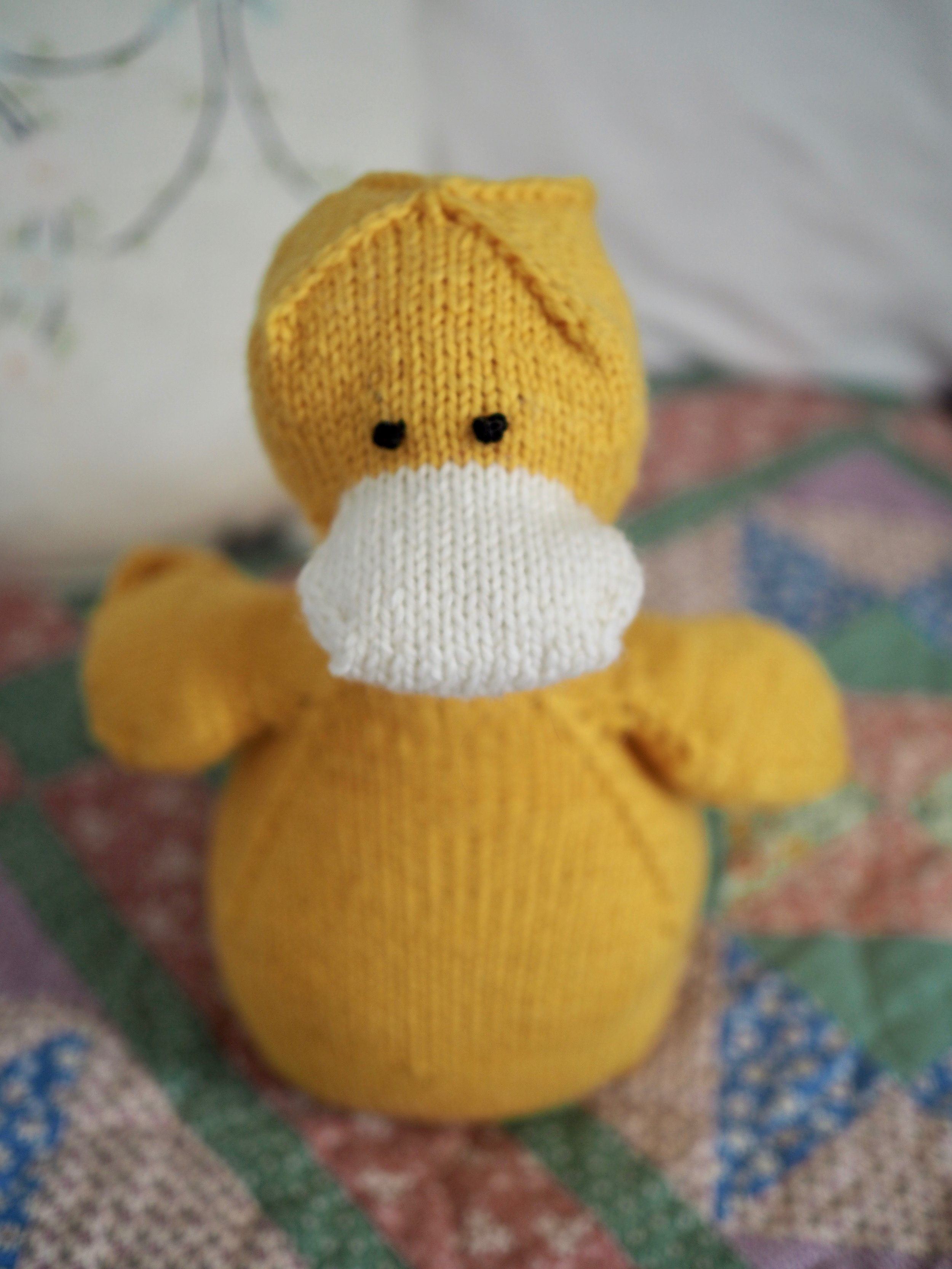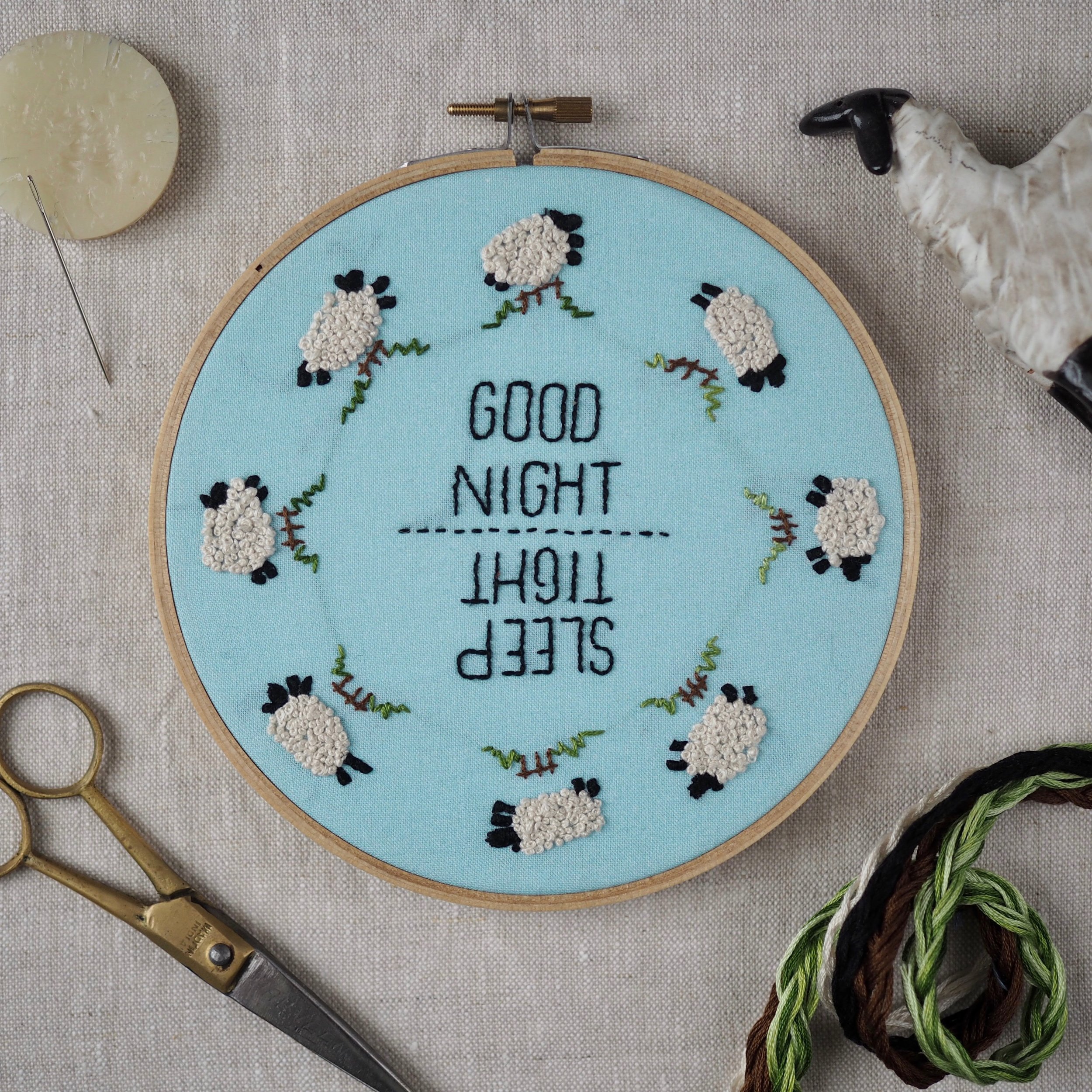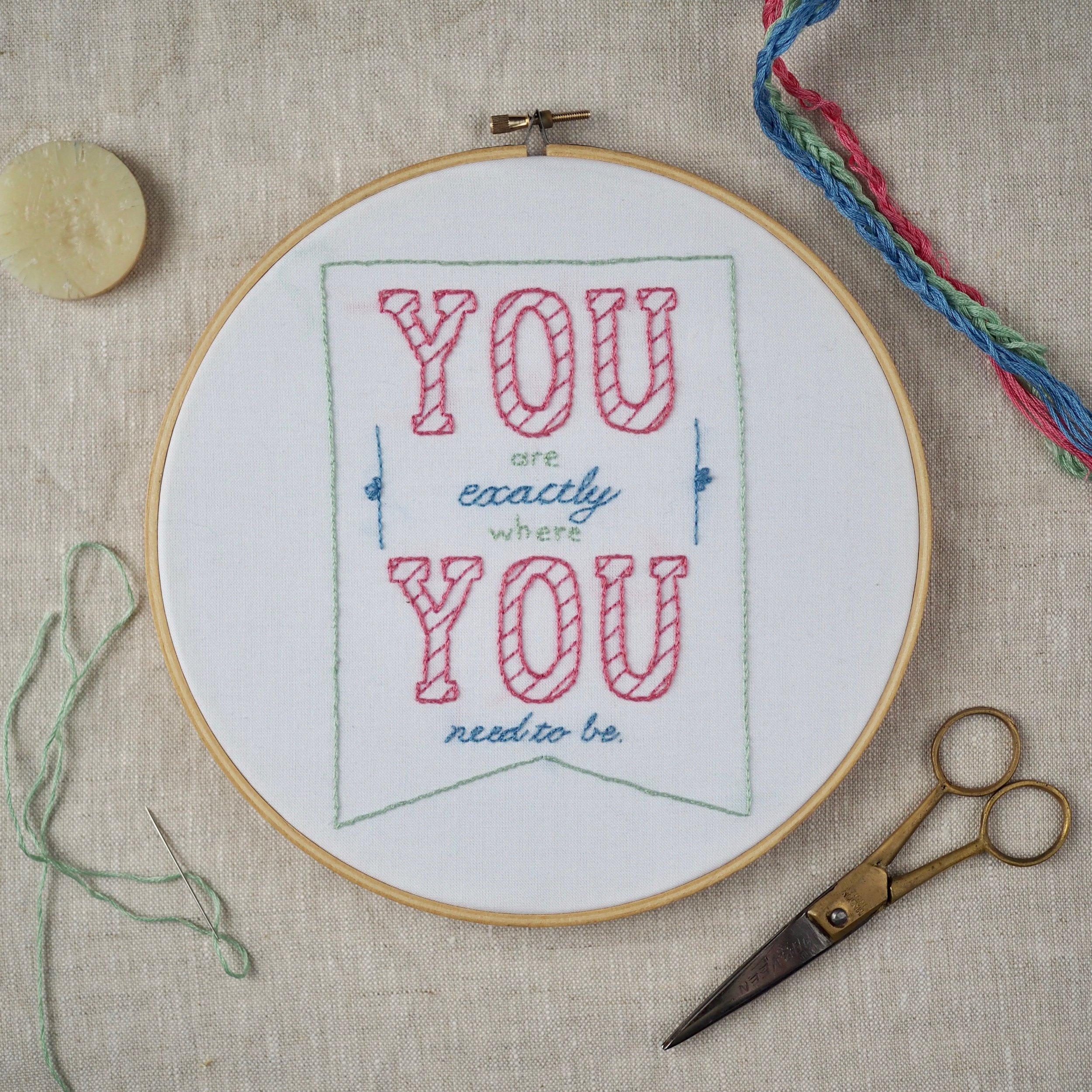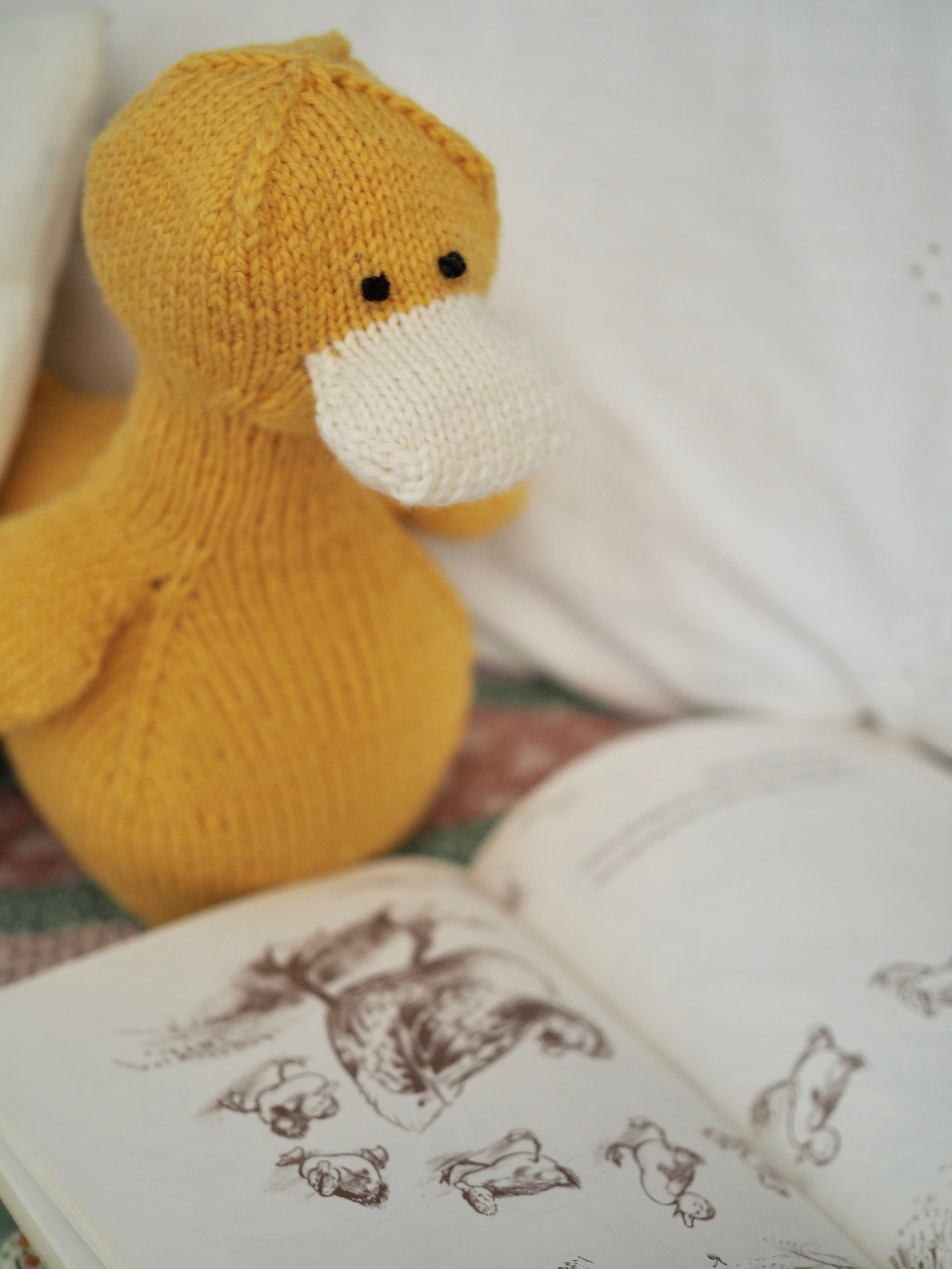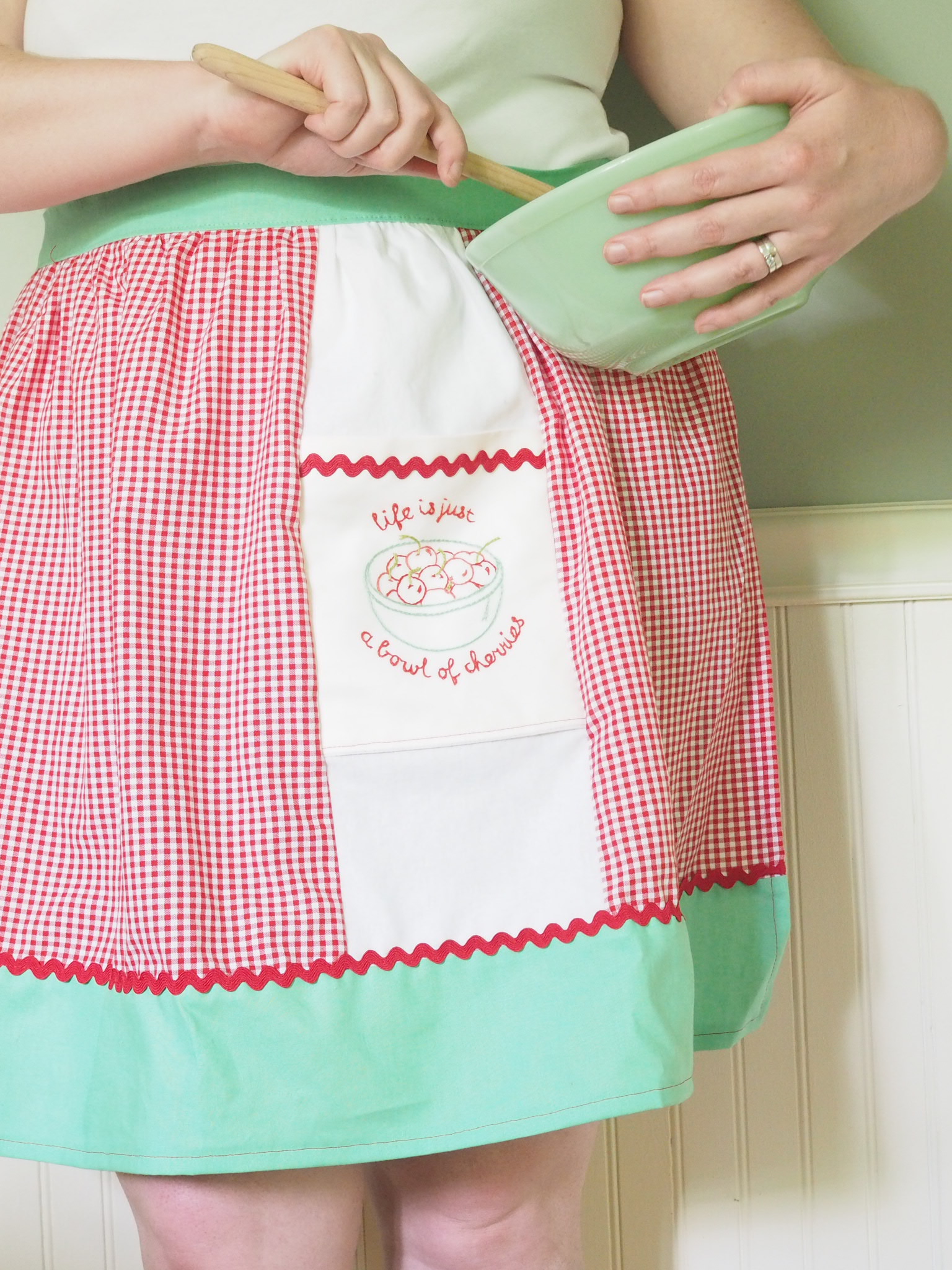Today we're going to move from something ressembling a wide wooden shoe to something more duck-like.
As before, click on any gridded photo for a larger version.
Centered Doubled Decreases (cddc)
A centered double decrease (cddc) decreases two stitches with center stitch making a clear line up the middle. Work a cddc as follows:
- Work until there is one stitch before the marked stitch
- Slip the unworked stitch and marked sts together as one, as if you were knitting them
- Knit the next stitch normally
- Pass the two slipped stitches over the knitted stitch.
The line of the center of the decreases should be pretty clear to follow, but feel free to move up the stitch marker if you find it helpful.
Preparing for an Afterthought Appendage
I like working wings/legs/etc in an afterthought style, because it means that the appendage is firmly attached to the body, no grafting or seaming needed. Meaning it stands up all the stronger to any grabby hands.
To set up for an afterthought:
- Put down your working yarn, but do not cut.
- Knit the correct number of stitches in scrap yarn.
- Slip sts in scrap yarn back to left hand needle.
- Knit the stitches again with working yarn and carry on as usual.
I like to keep the tails of the scrap yarn on the outside of the body, as this helps when you need to pick it out.
Picking Up An Afterthought Appendage
To pick up the stitches for an afterthought appendage, work as follows:
- Using a spare needle, pick up the right side of each stitch just below the scrap yarn stitching, picking up one stitch for each scrap yarn stitch.
- Repeat for the row of stitches just above the scrap yarn.
- Using a spare knitting or tapestry needle, pick out the scrap yarn. You should be left with the same number of stitches on each needle.
The first few rounds after you pick up will be fiddly, because there's not a lot of give because the body is already stuffed. It's a bit easier if you use magic loop and isn't a problem after those first few rows.
Making the Eyes (French Knots)
Make the facial features before you do (or at least graft shut) the beak, as it will be easier to hide the ends.
- Secure thread at inside of head.
- Bring up needle through fabric at desired position.
- With needle pointing away from fabric, wrap thread around shank of needle 2-3 times. (The more wraps, the bigger the finished knot).
- Holding onto the yarn tail until it becomes too short, push the needle down through the fabric one half-stitch over from where it came up. Pull snugly against fabric.
Repeat steps 2-4 for second eye. You can also add eyebrows, eyelashes, etc. at this point.
Grafting Openings Shut (Kitchener Stitch)
Kitchener Stitch is my favorite way to seamlessly close together these afterthought openings to do so:
- Cut the yarn, leaving a long tail and thread a tapestry needle.
- Place all stitches on two needles, with an equal amount on each needle and the needle tips pointing right.
- Put tapestry needle through first stitch on front needle (closest to you) as if to knit and pull tail through, removing the stitch off the knitting needle.
- Put tapestry needle through next stitch on front needle as if to purl. Pull tail through, but DO NOT remove stitch from knitting needle.
- Put tapestry needle through first stitch on back needle (farthest from you) as if to purl and pull tail through, removing the stitch off the knitting needle.
- Put tapestry needle through next stitch on back needle as if to knit. Pull tail through, but DO NOT remove stitch from knitting needle.
Repeat Steps 3-6 until all stitches have been grated together. Adjust tightness of tail so join is smooth before weaving in ends.
Congratulations! You now have all the techniques you need to finish your duck!!
If you're on Instagram, please tag me @mscleaver or via #domenicKAL or post in the Ravelry Group by April 21st to be eligible to win prizes!



